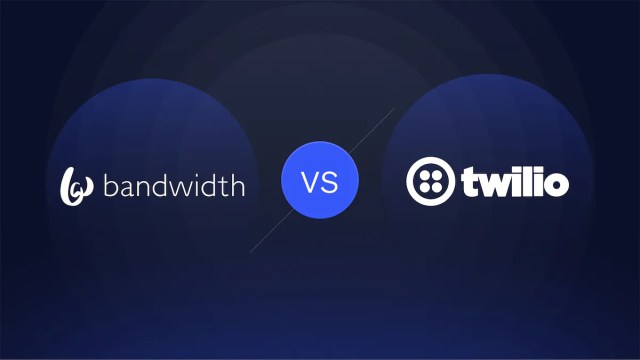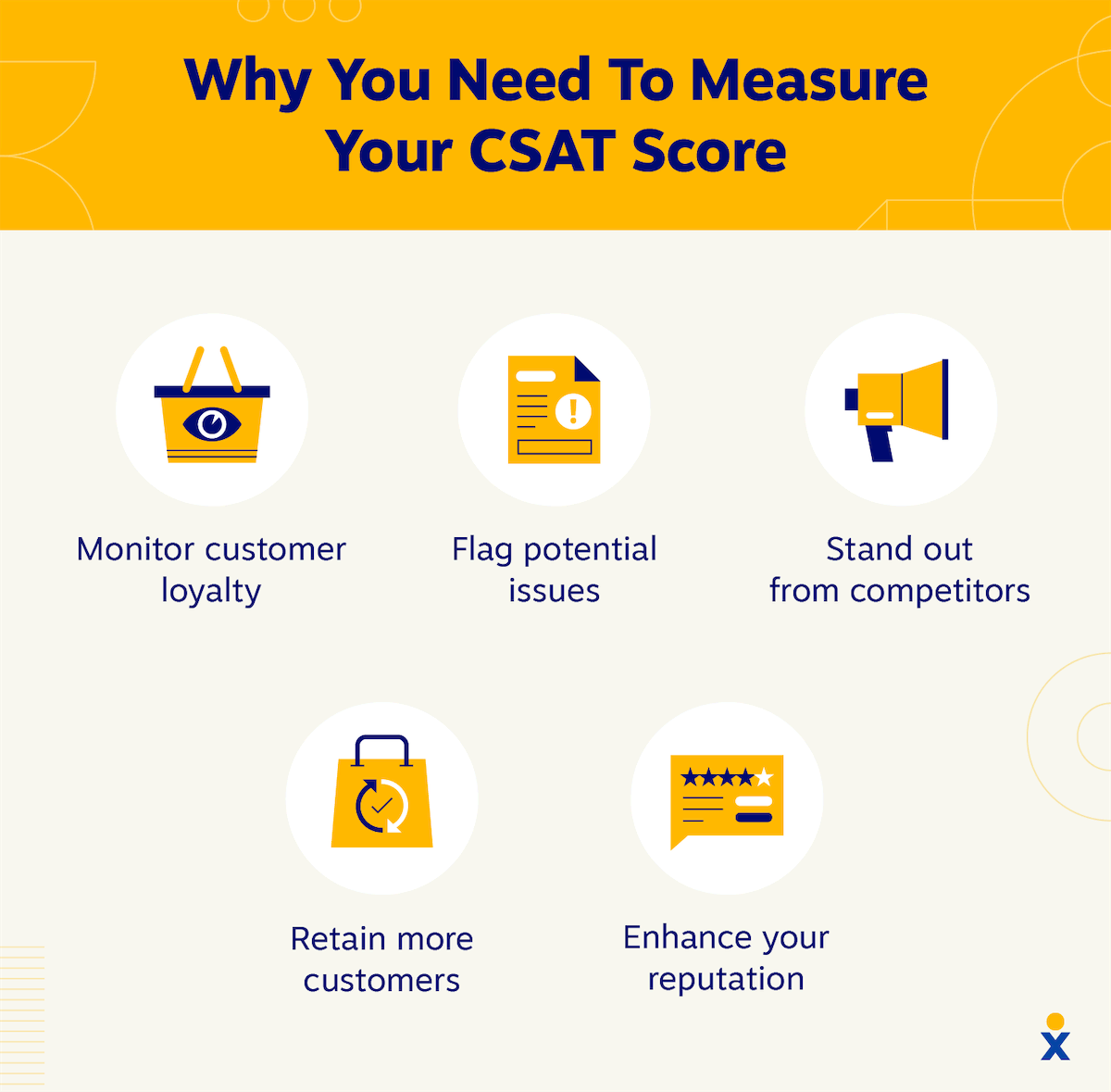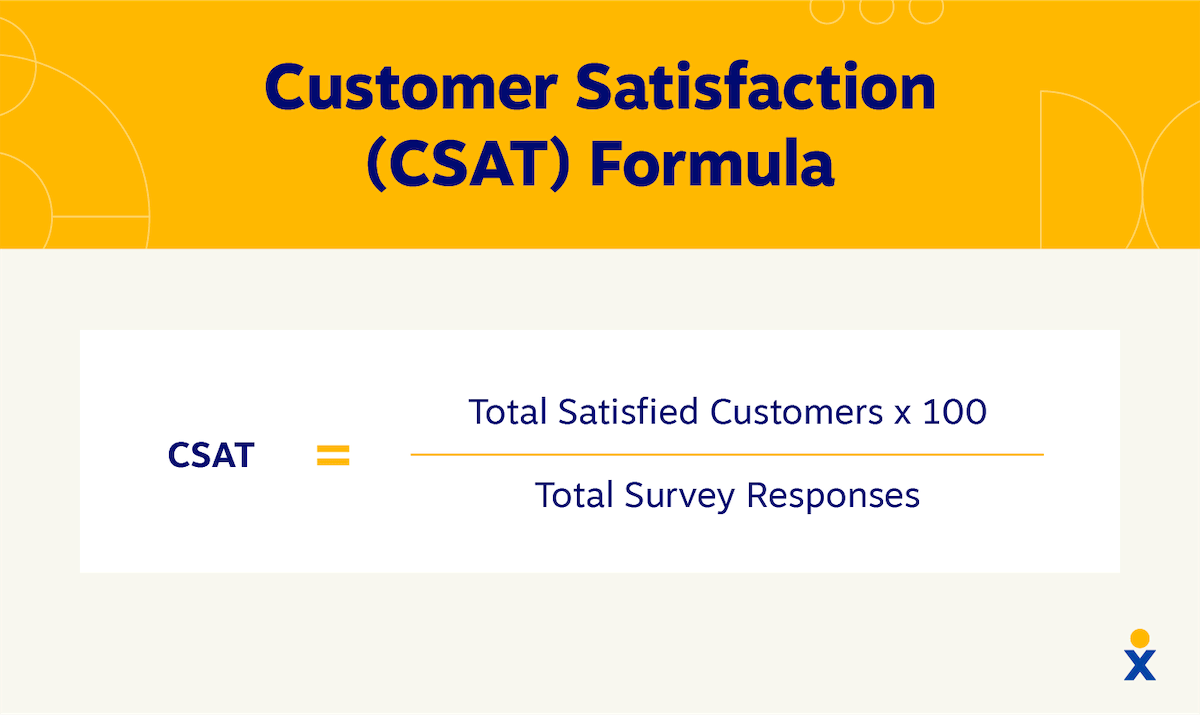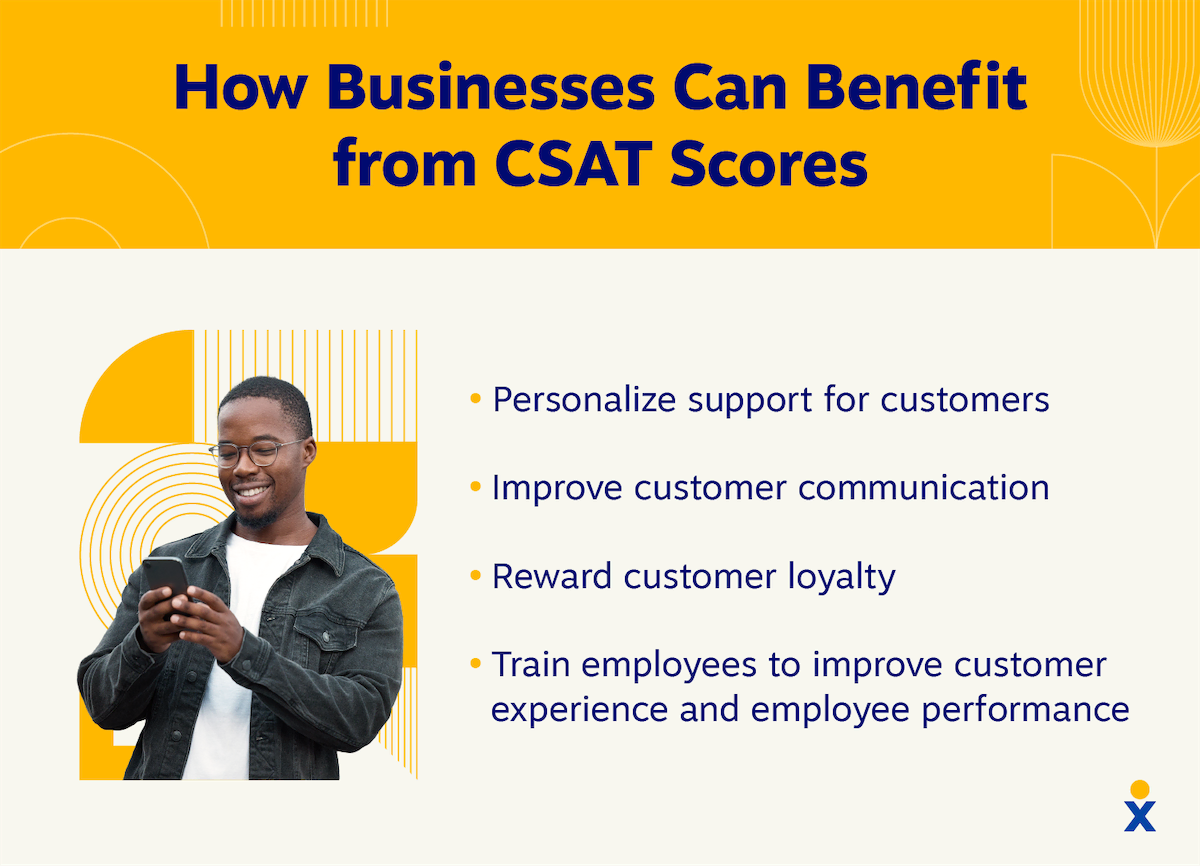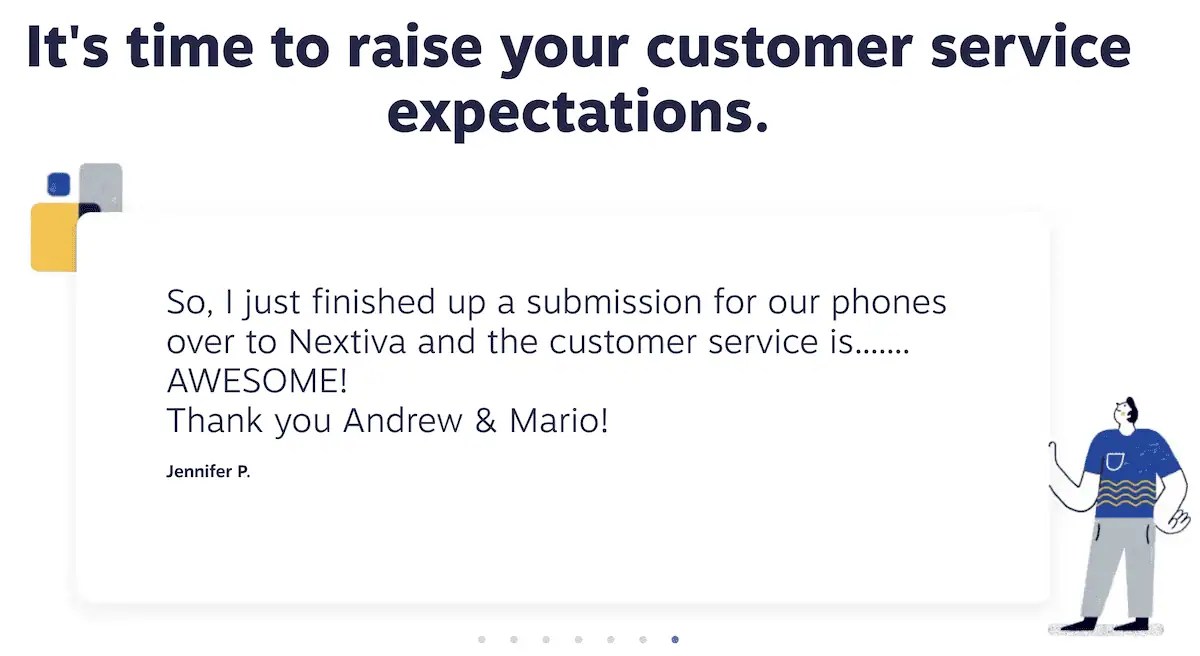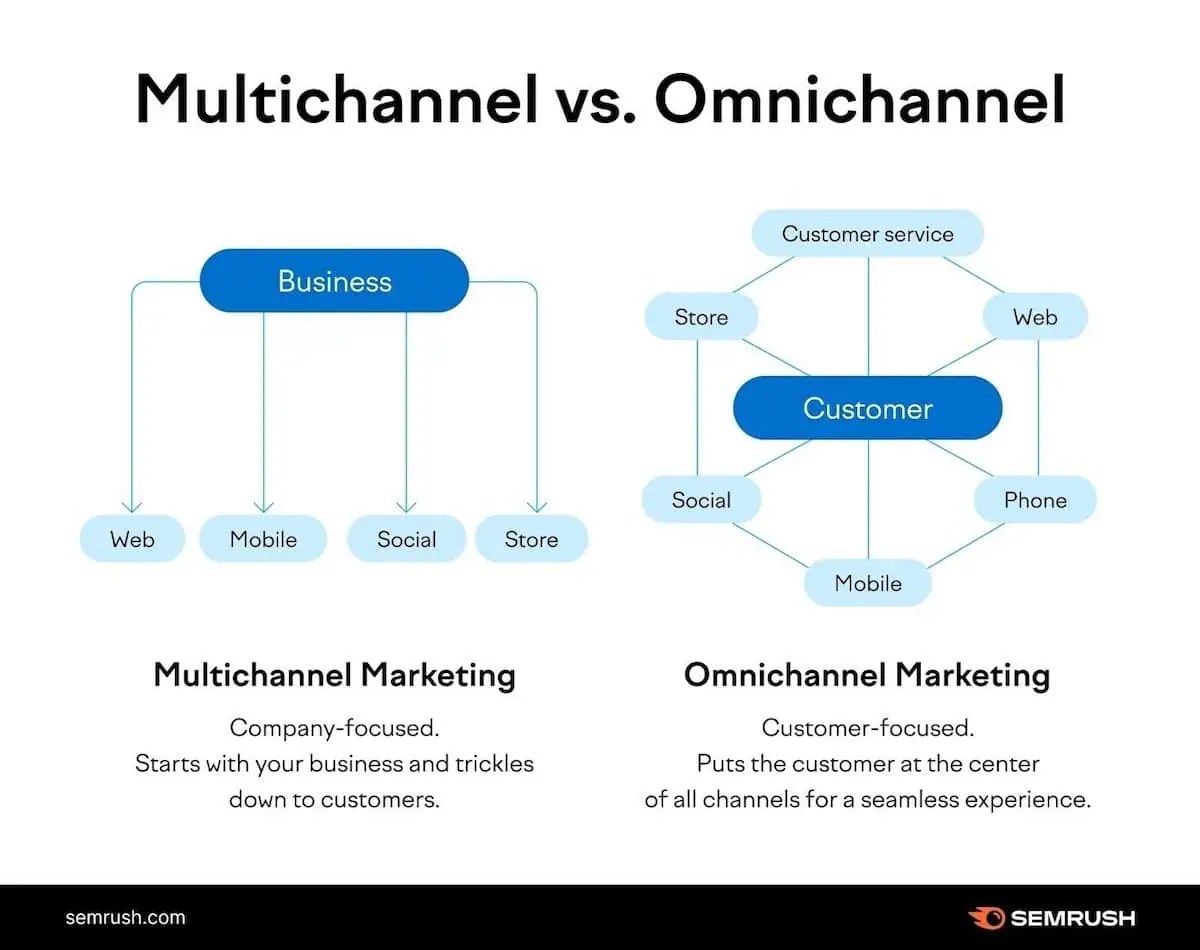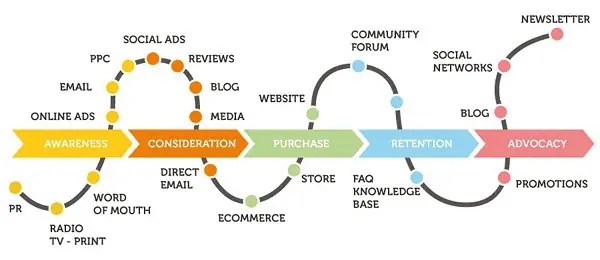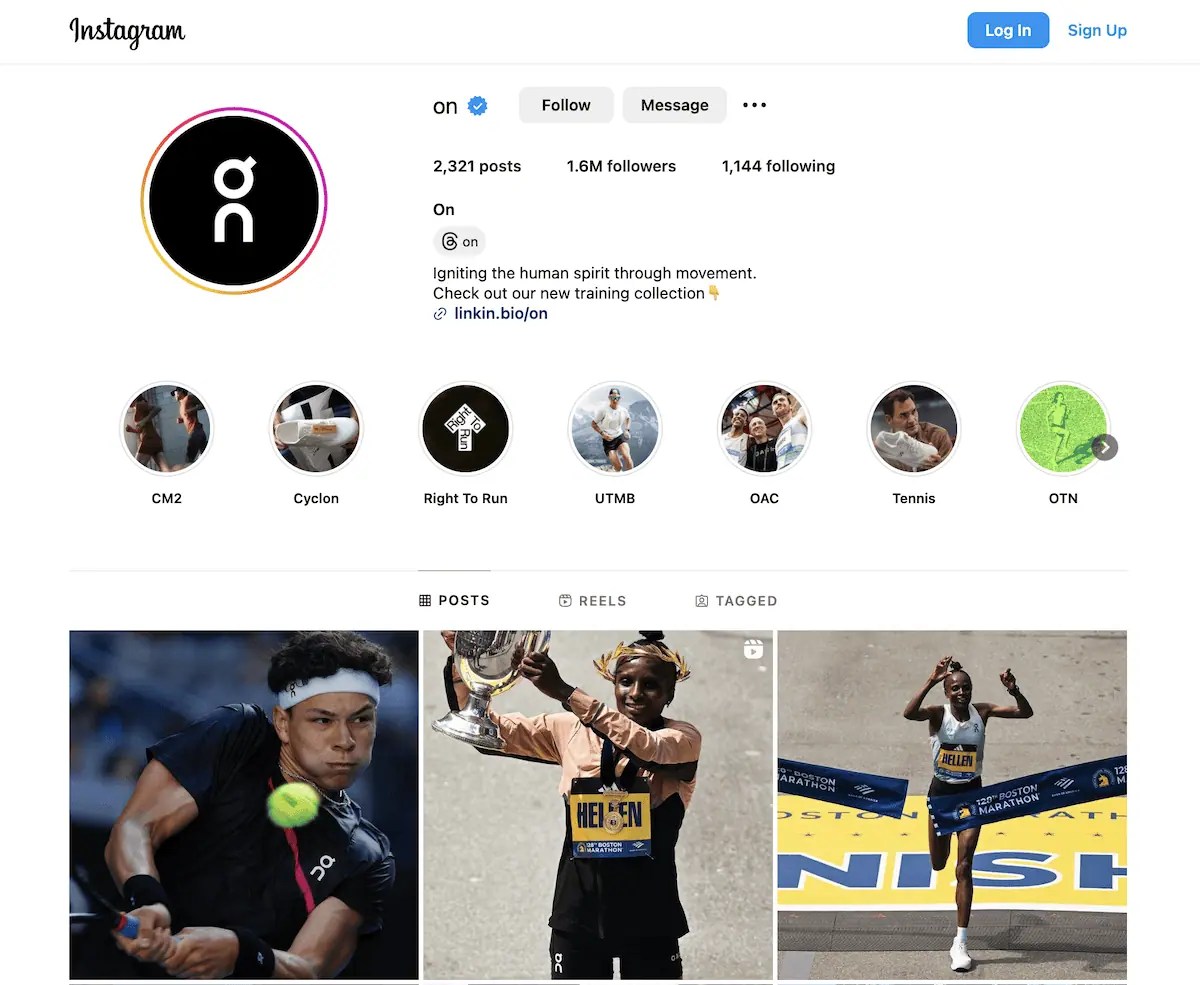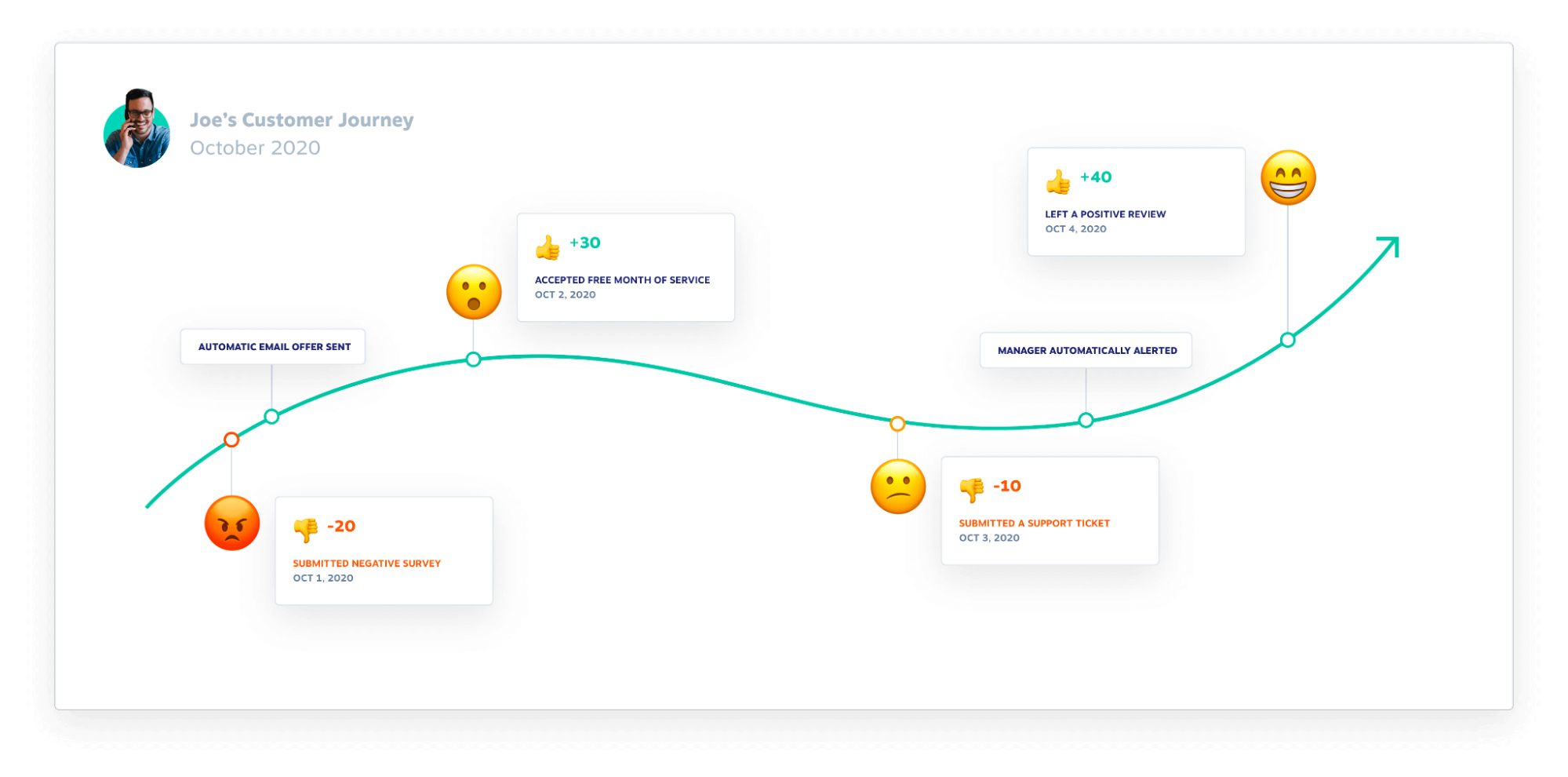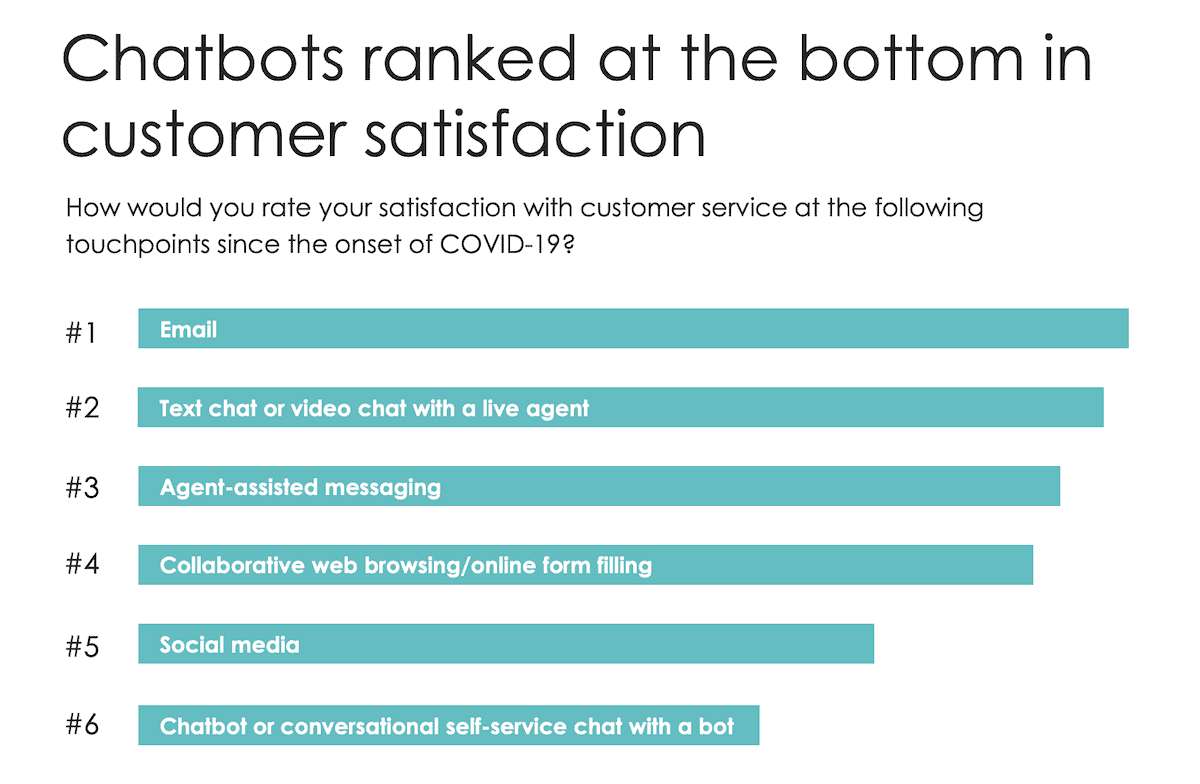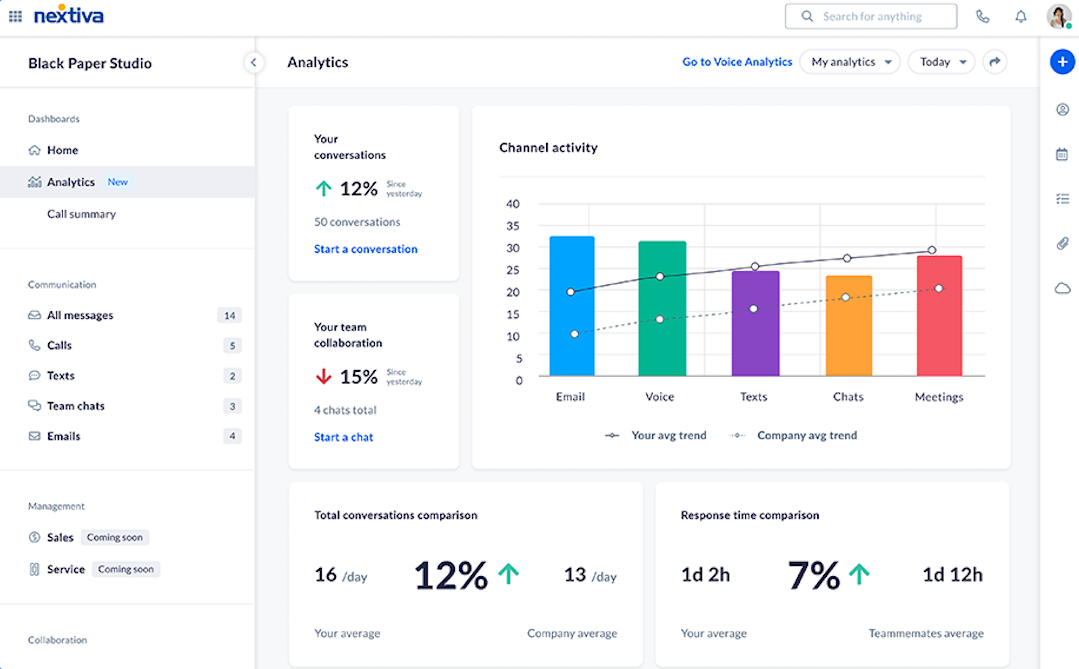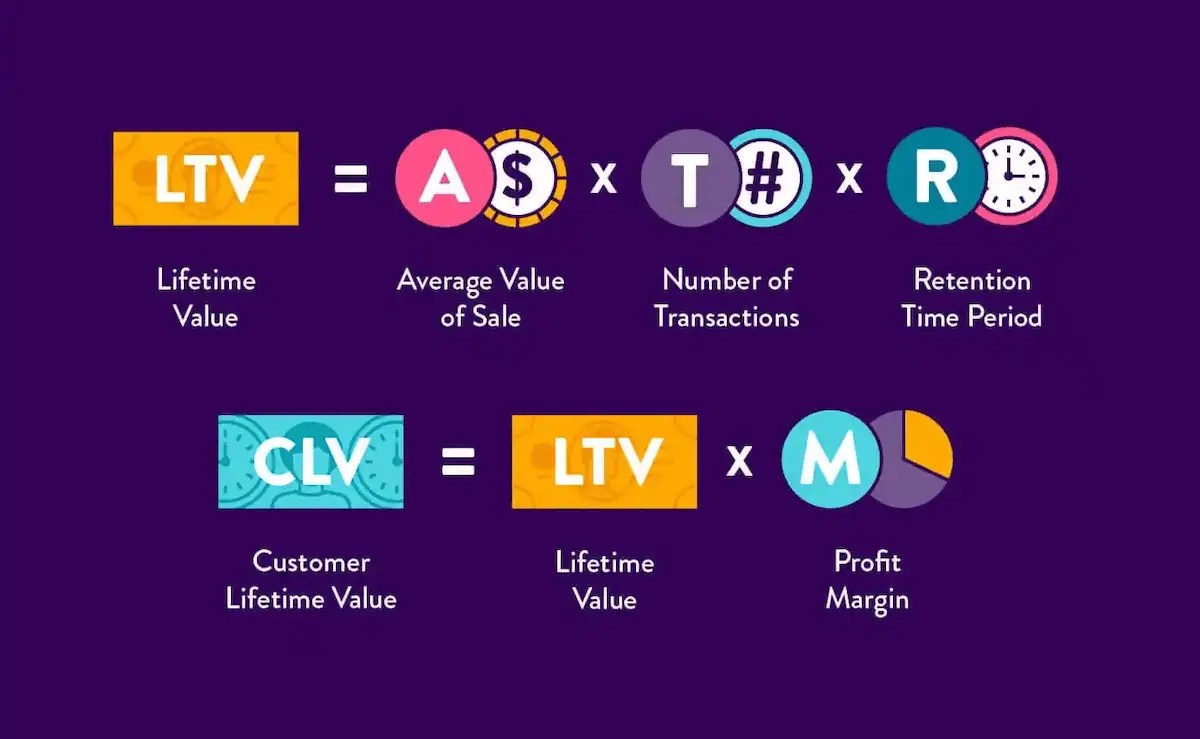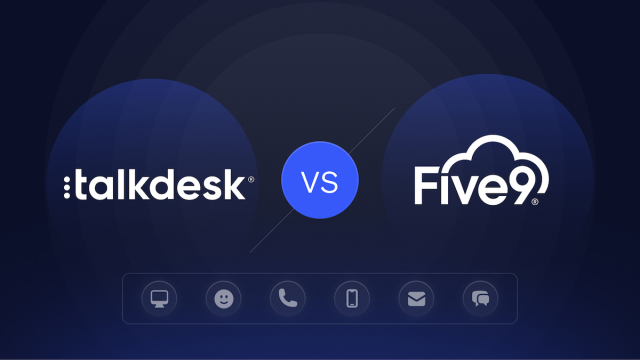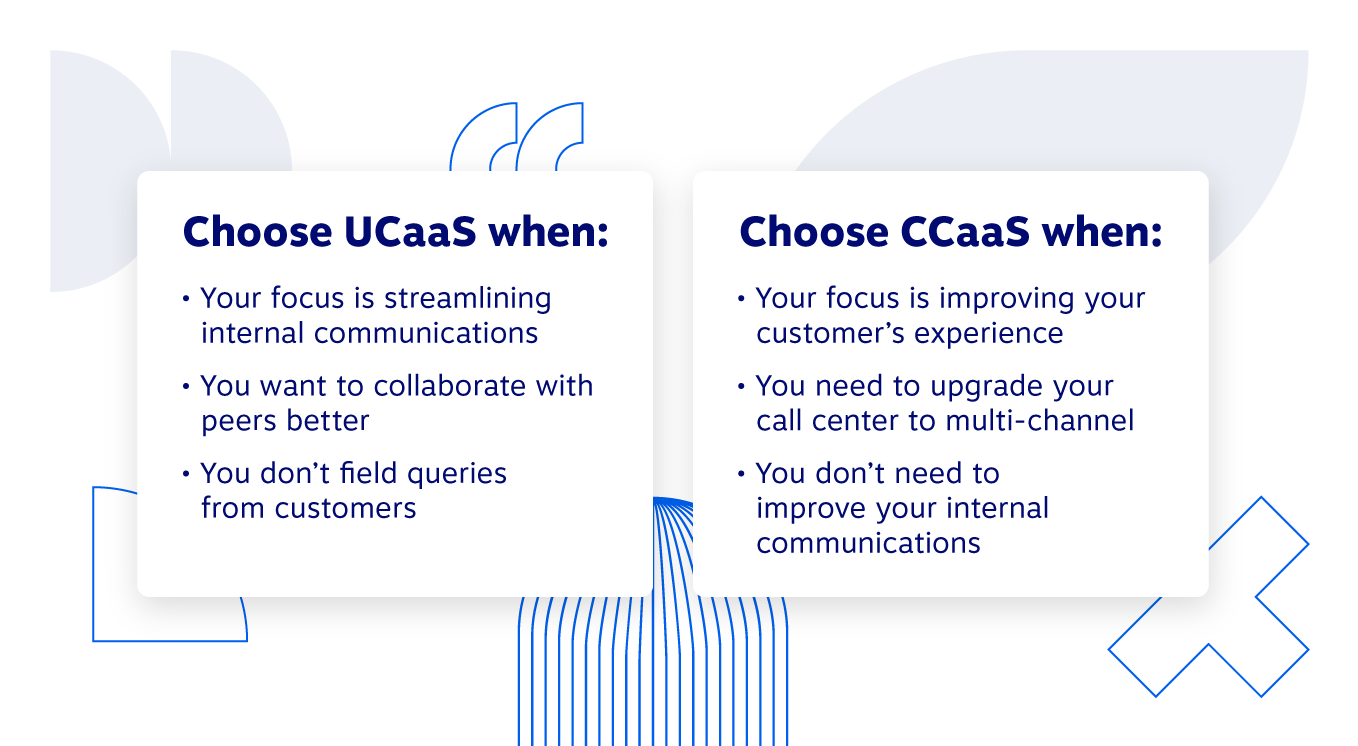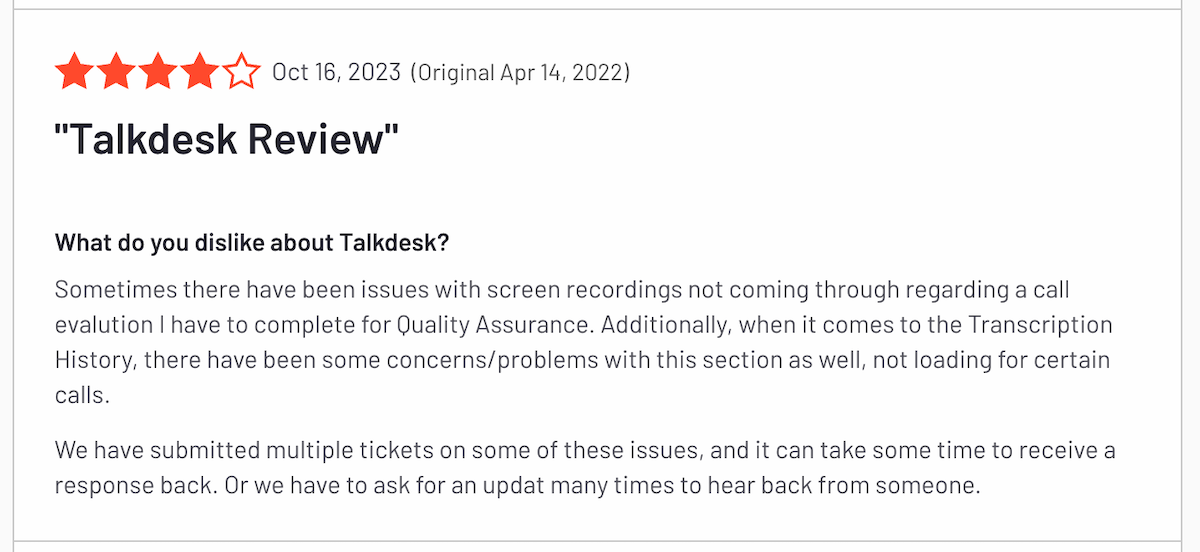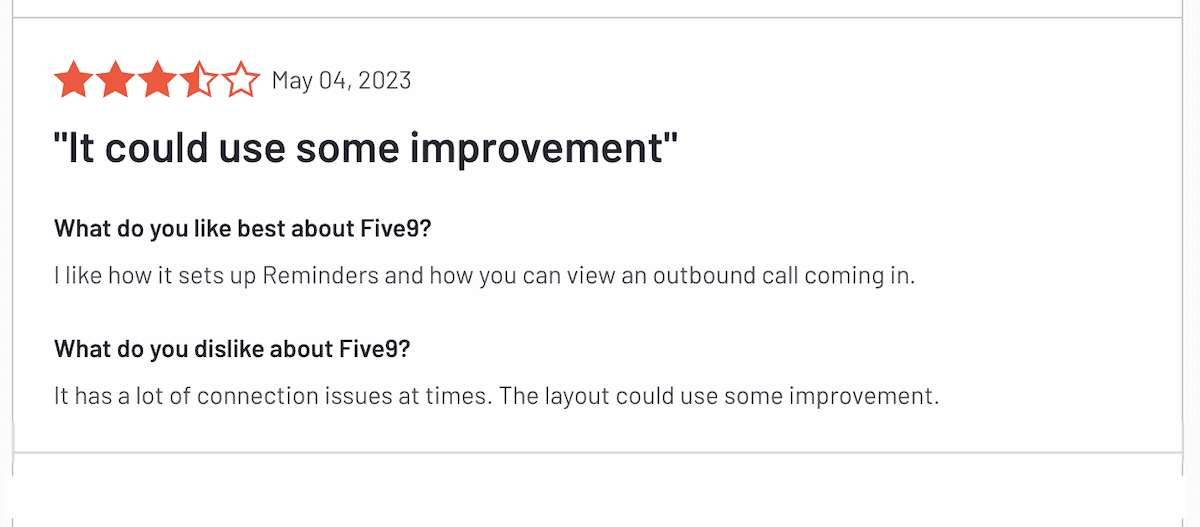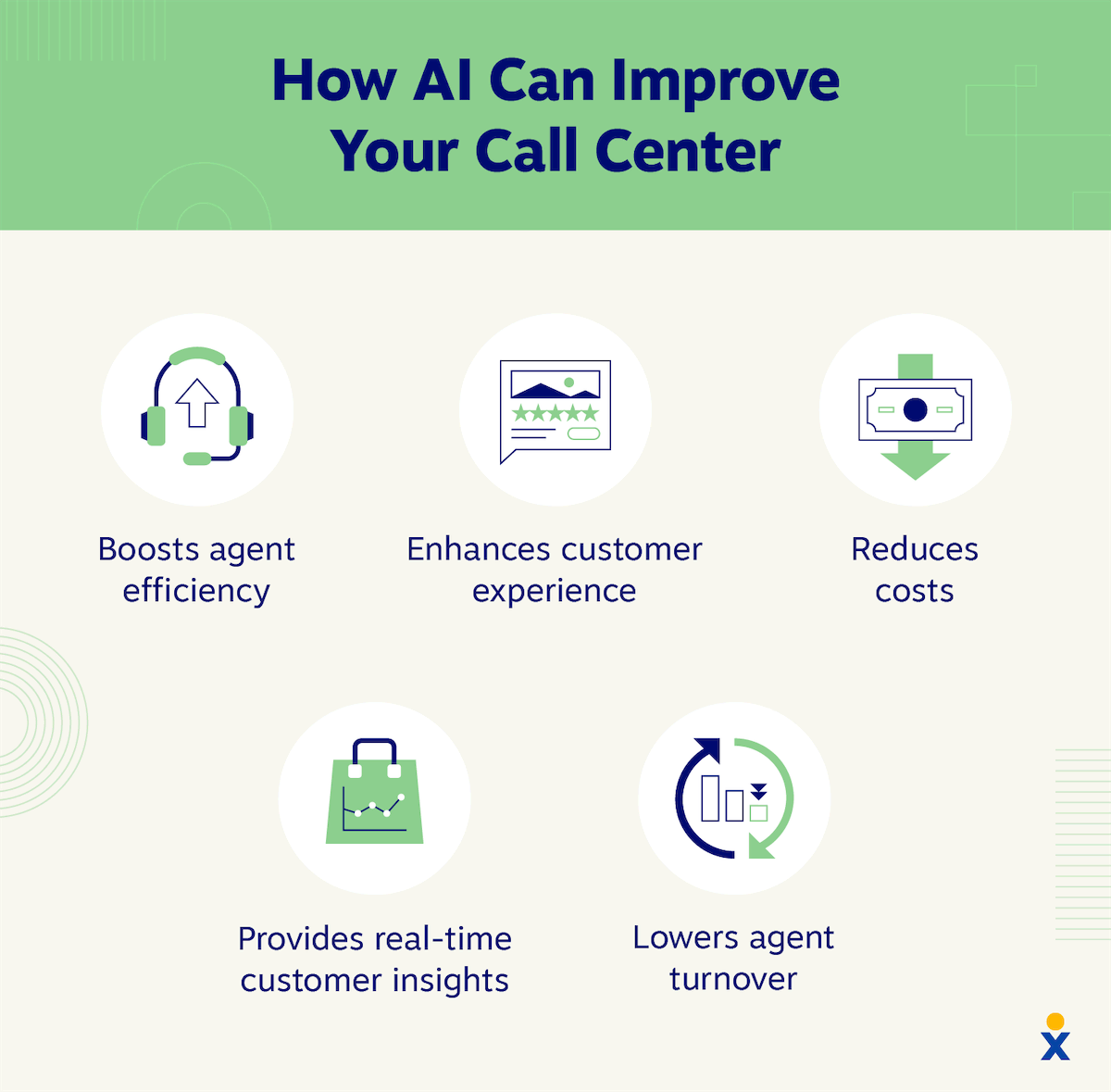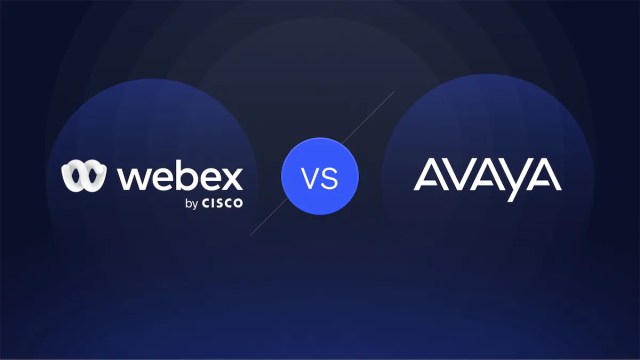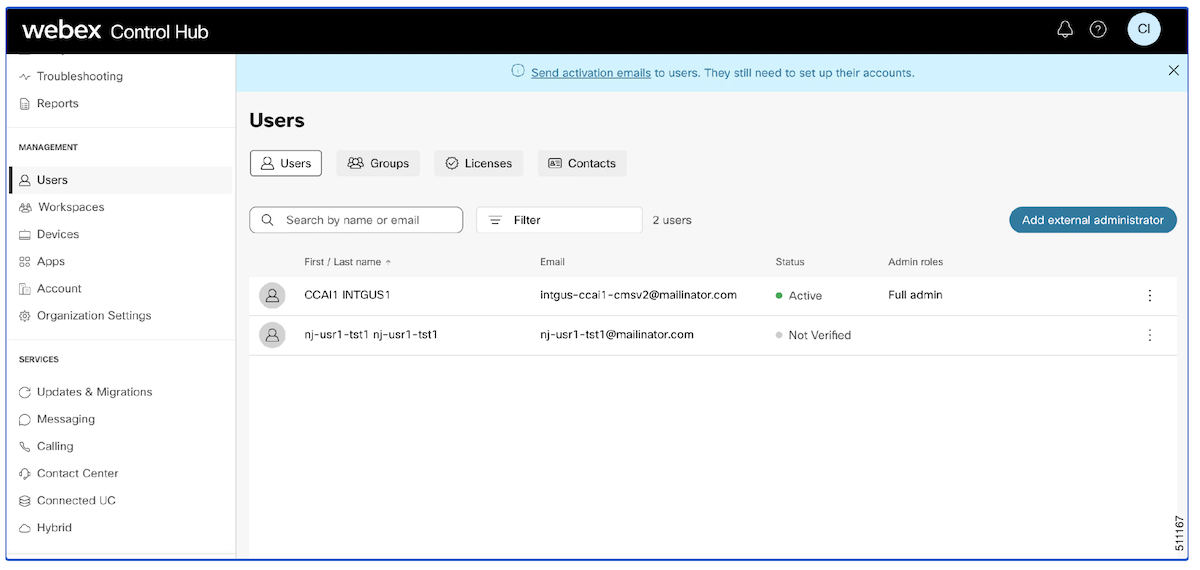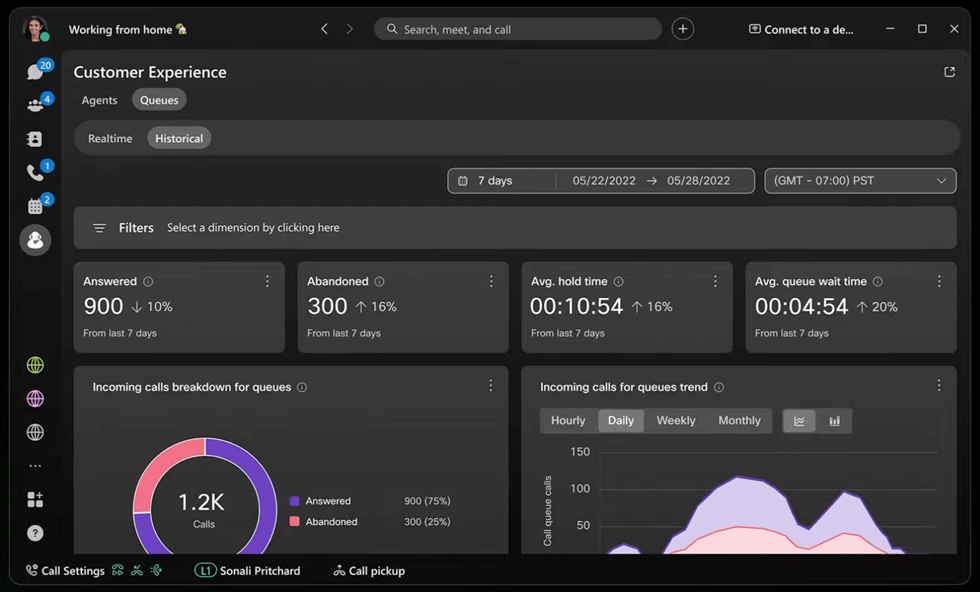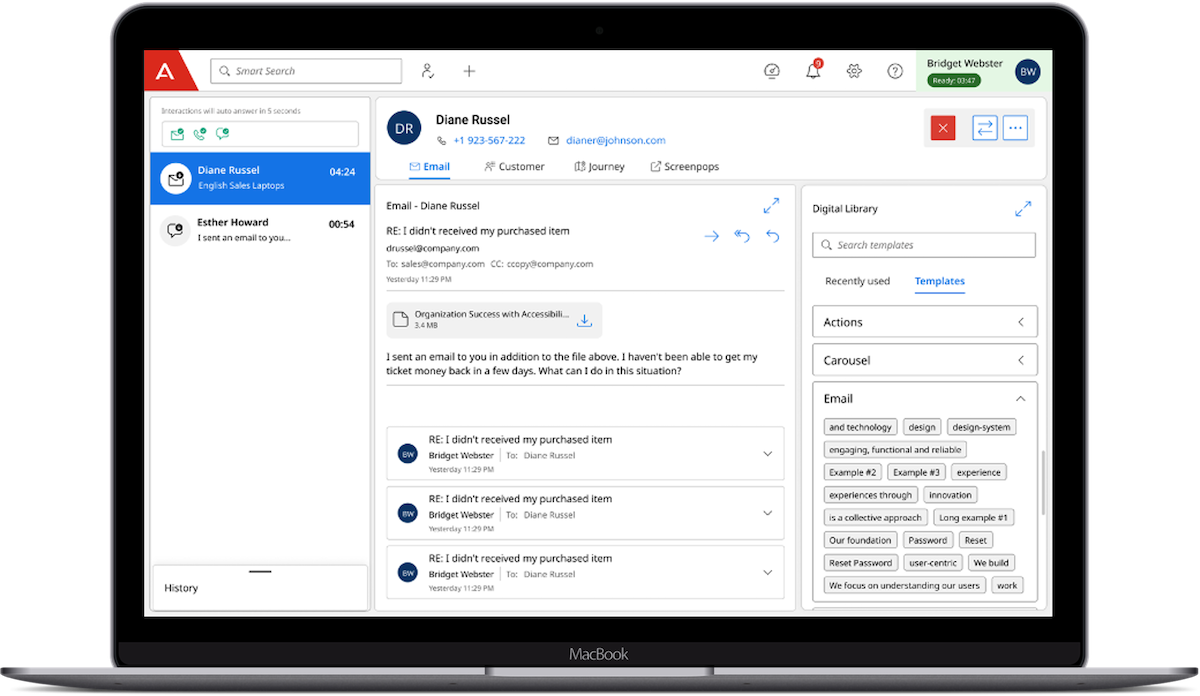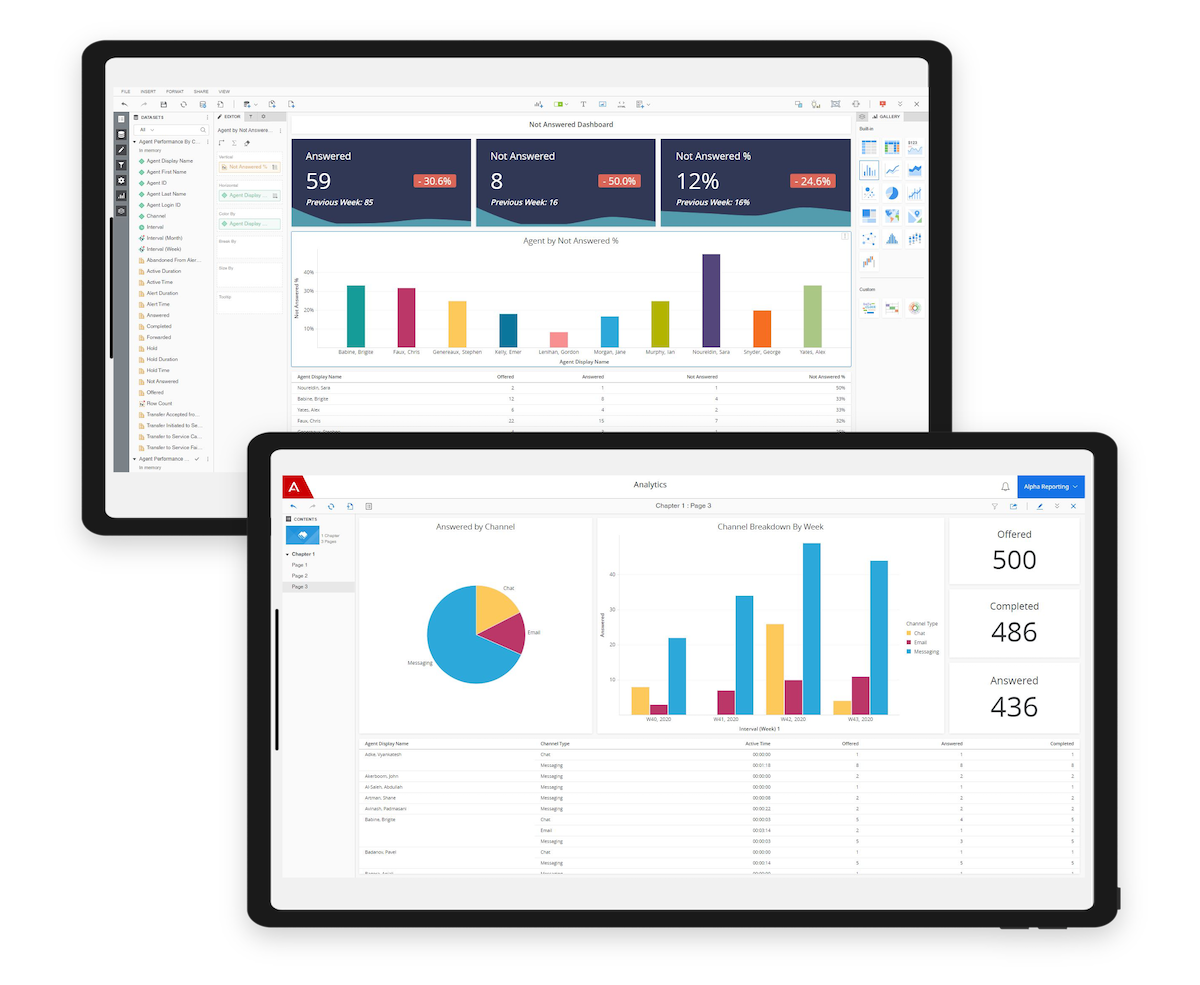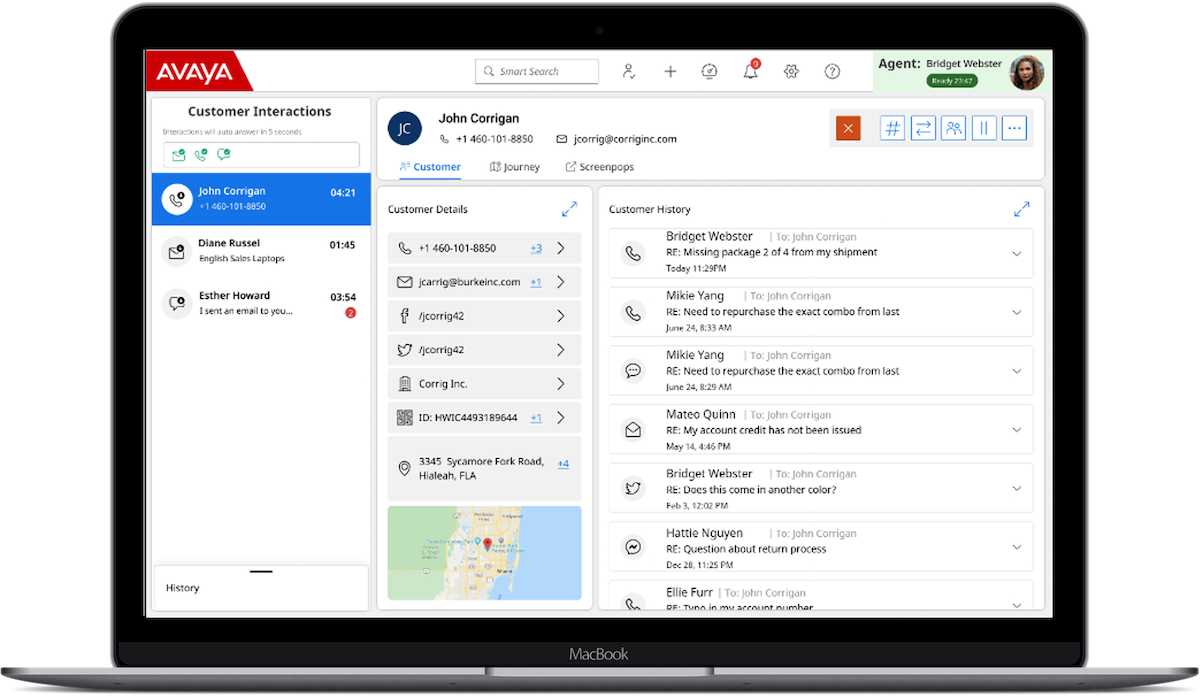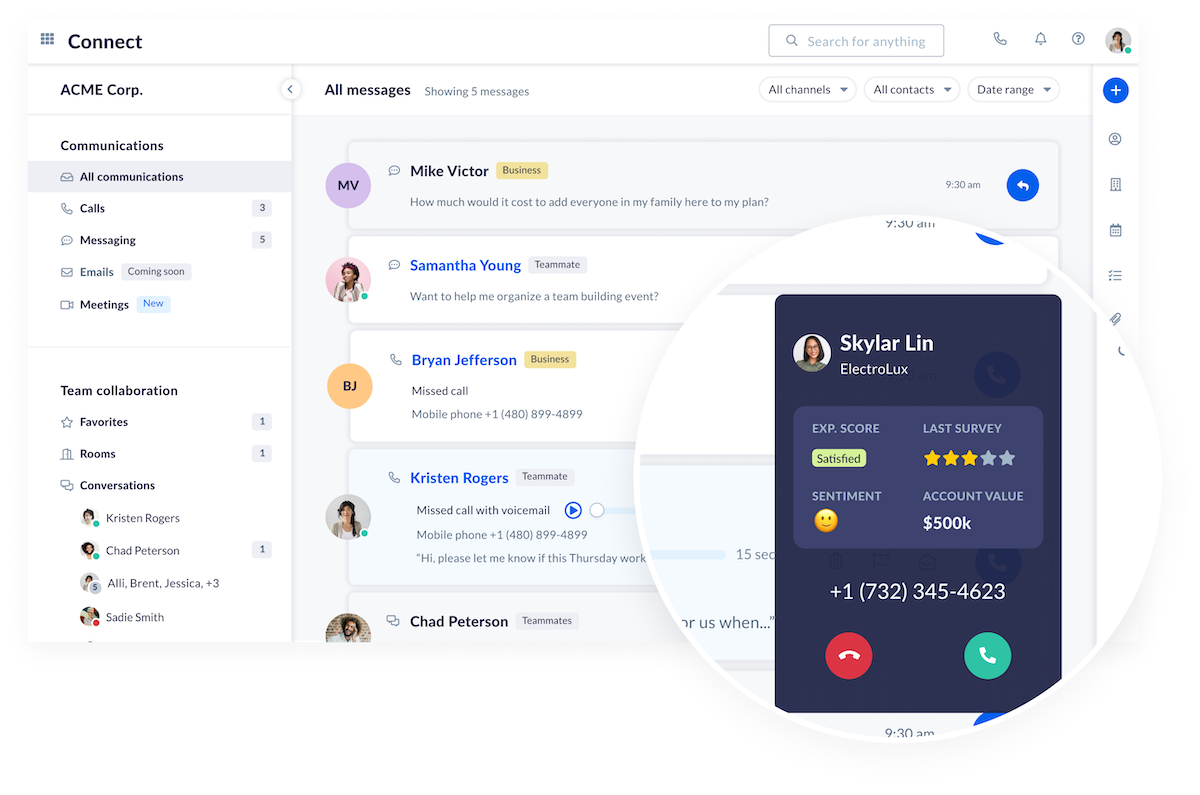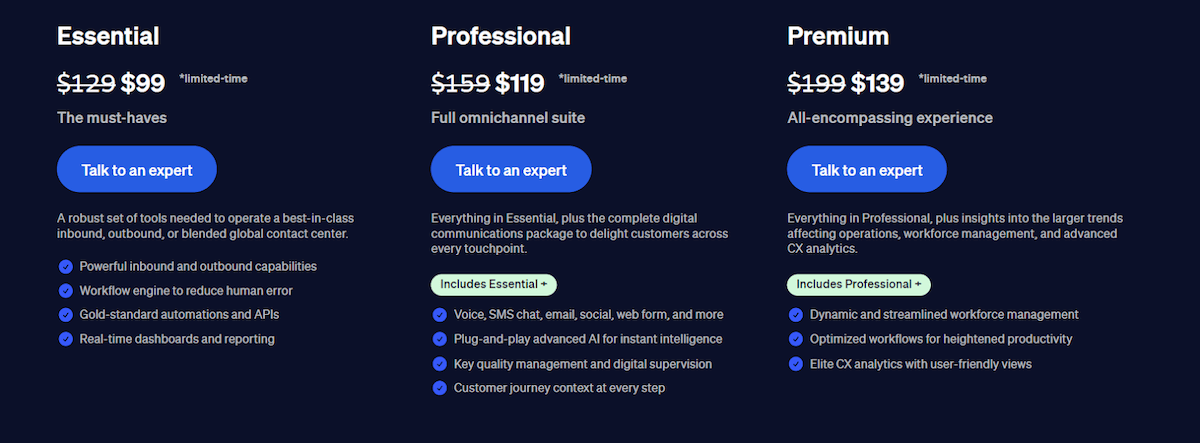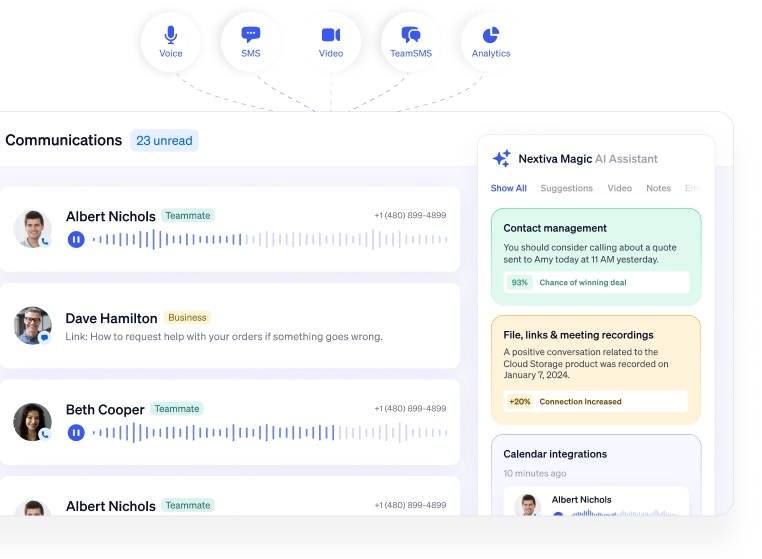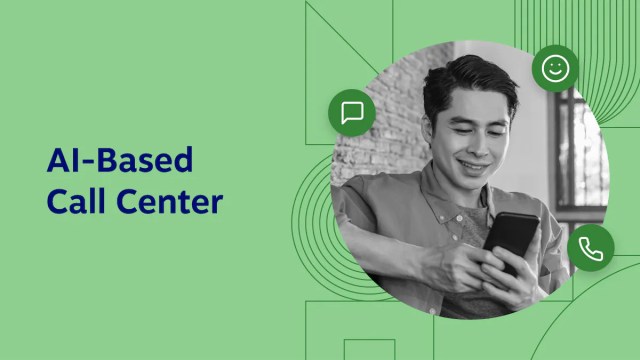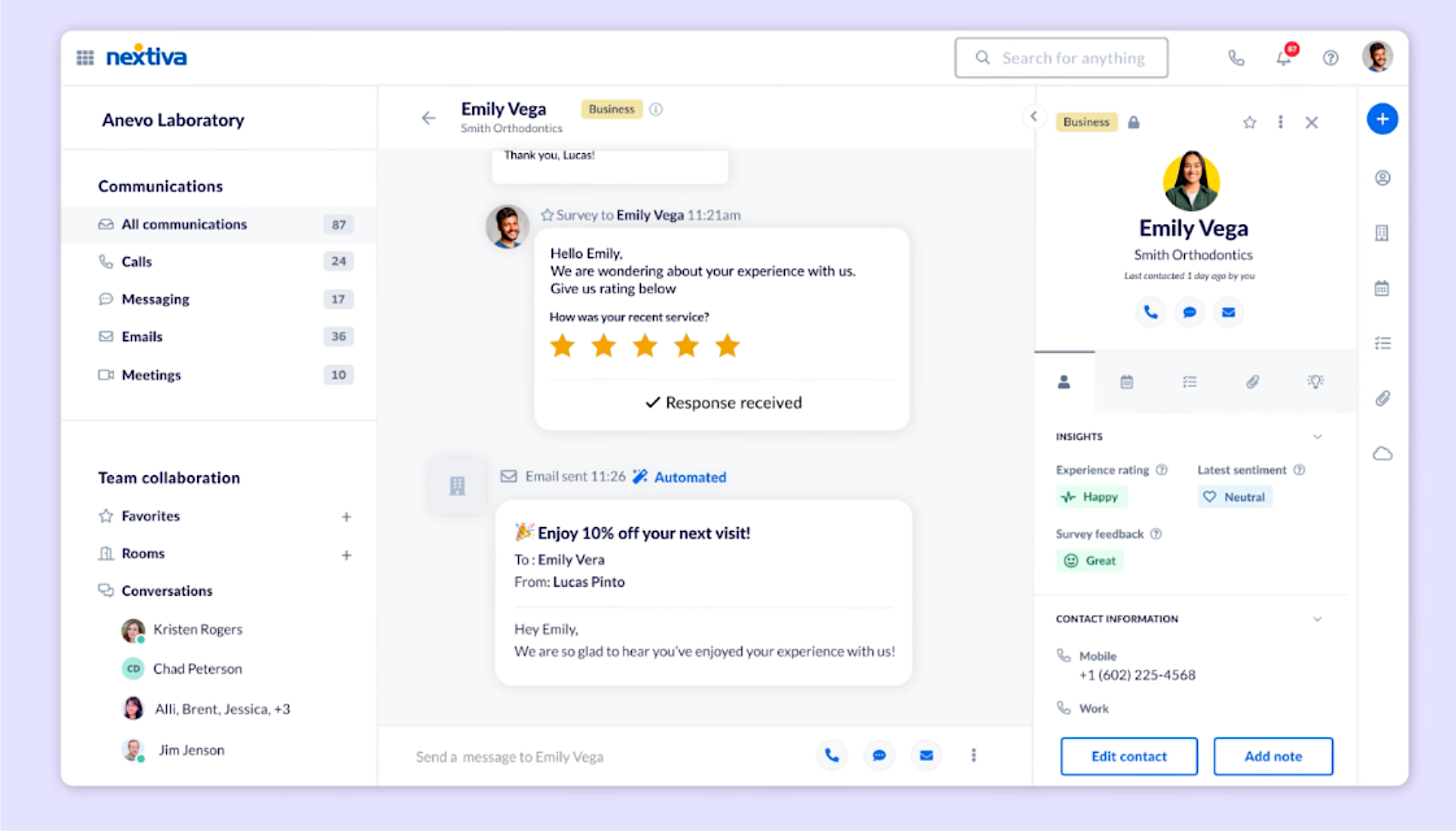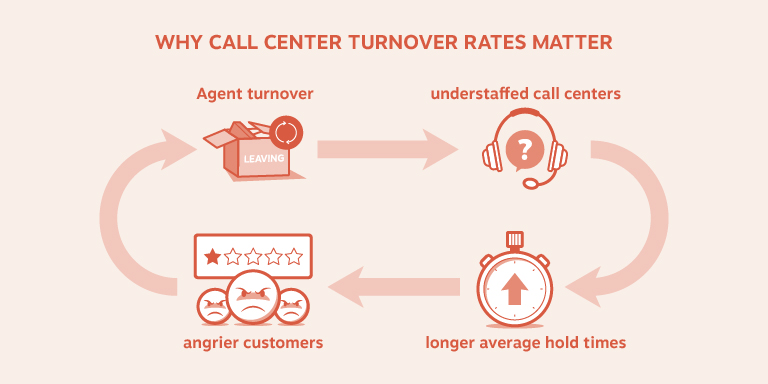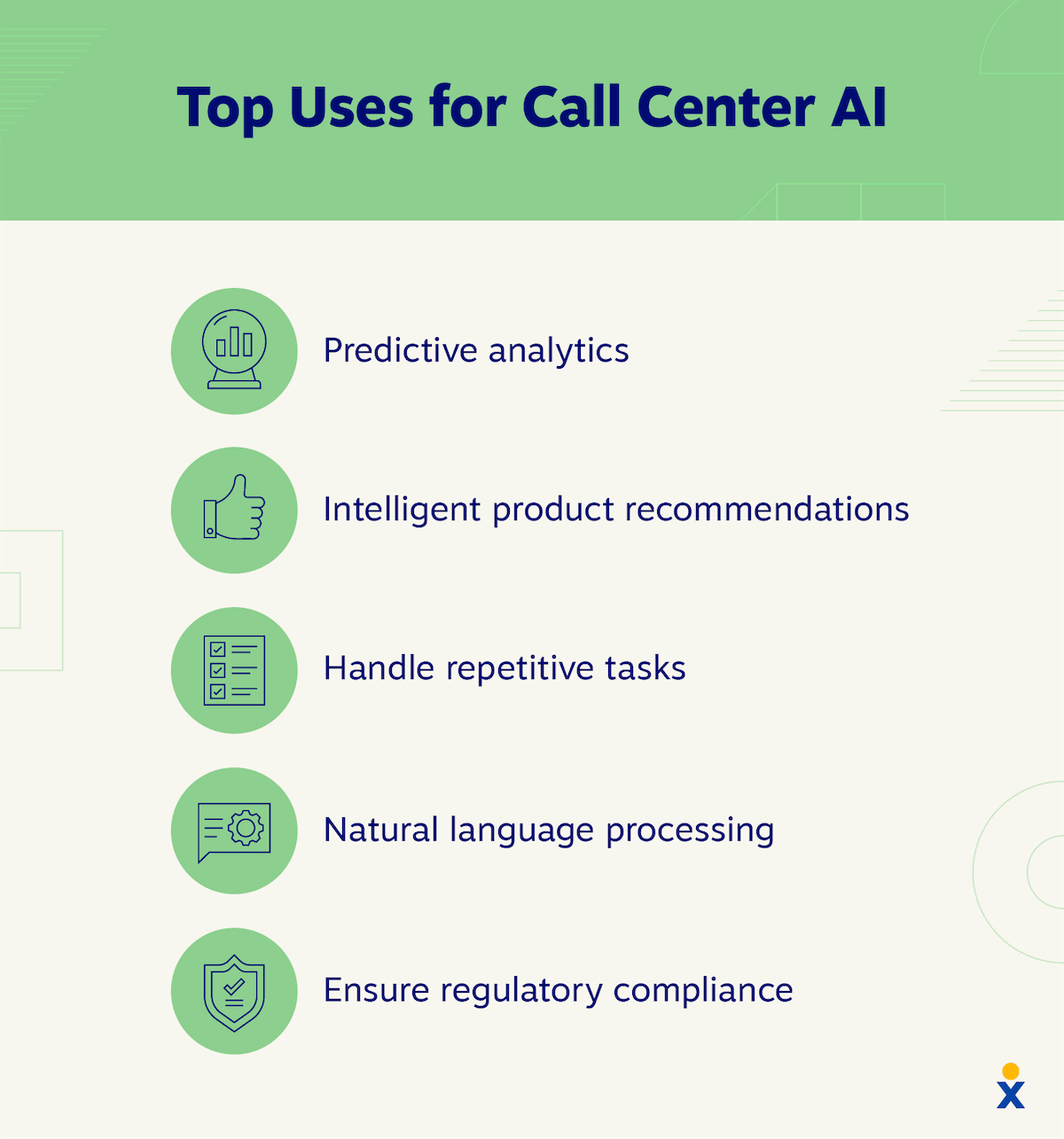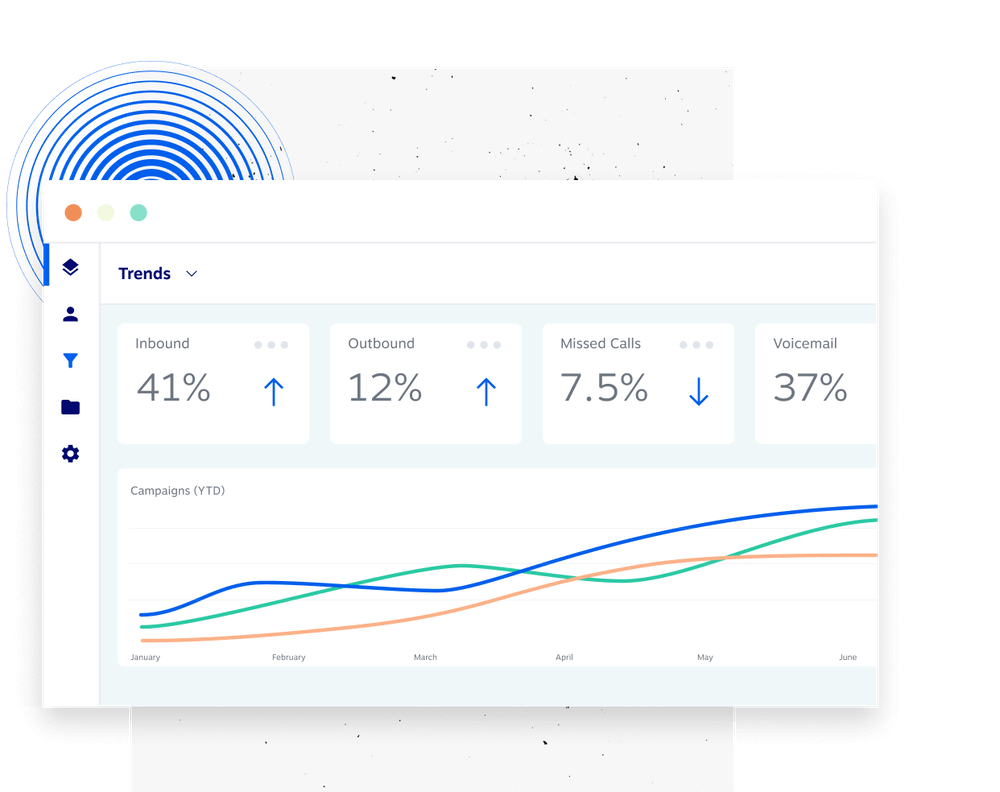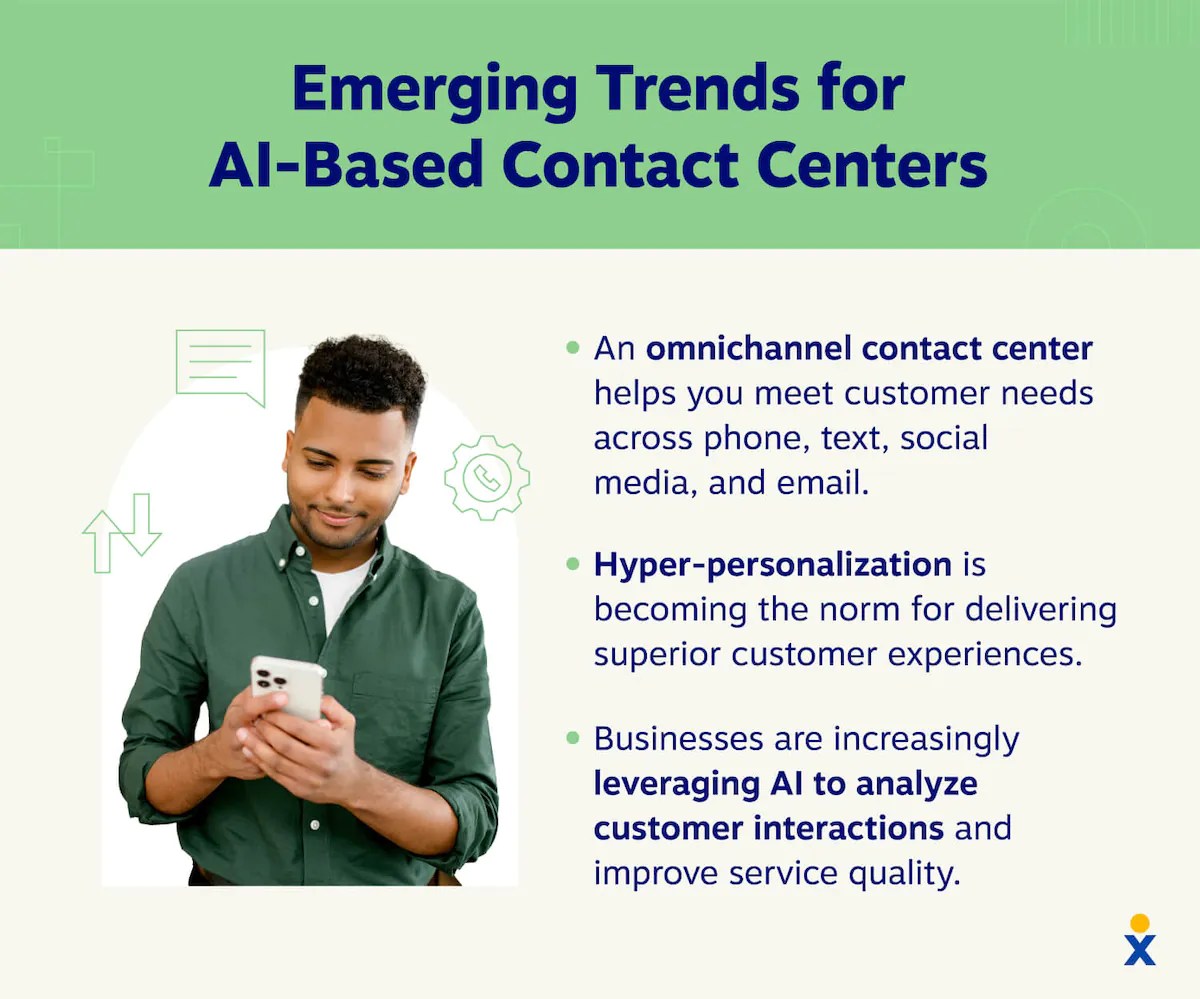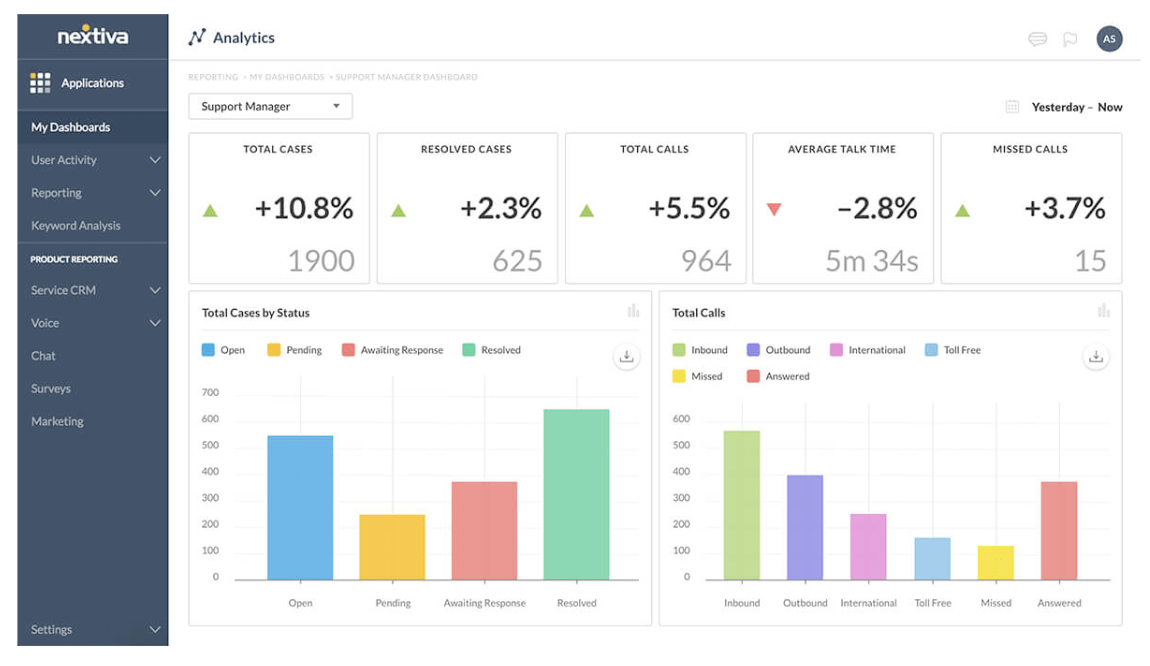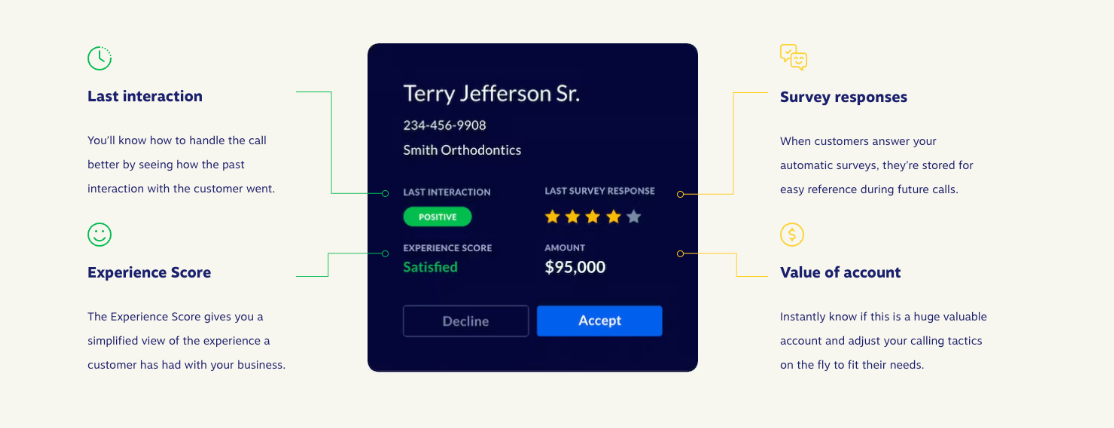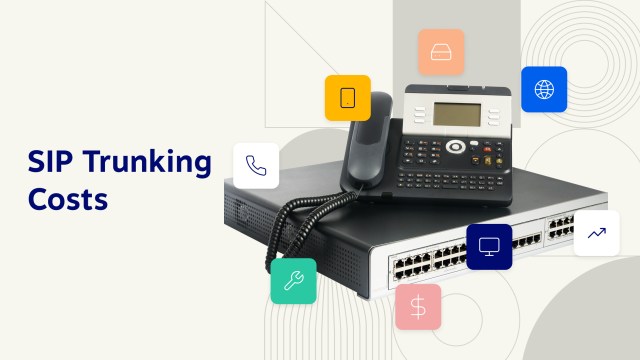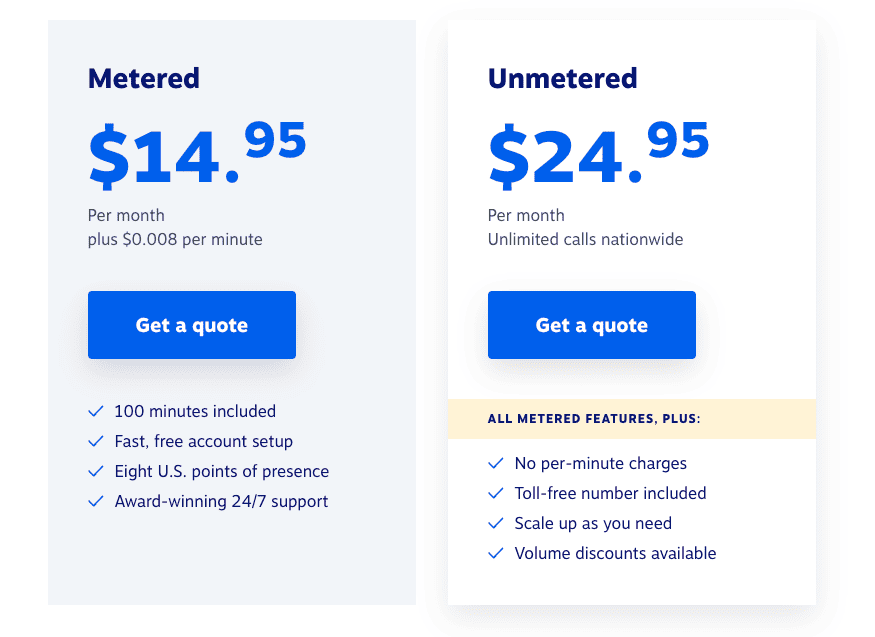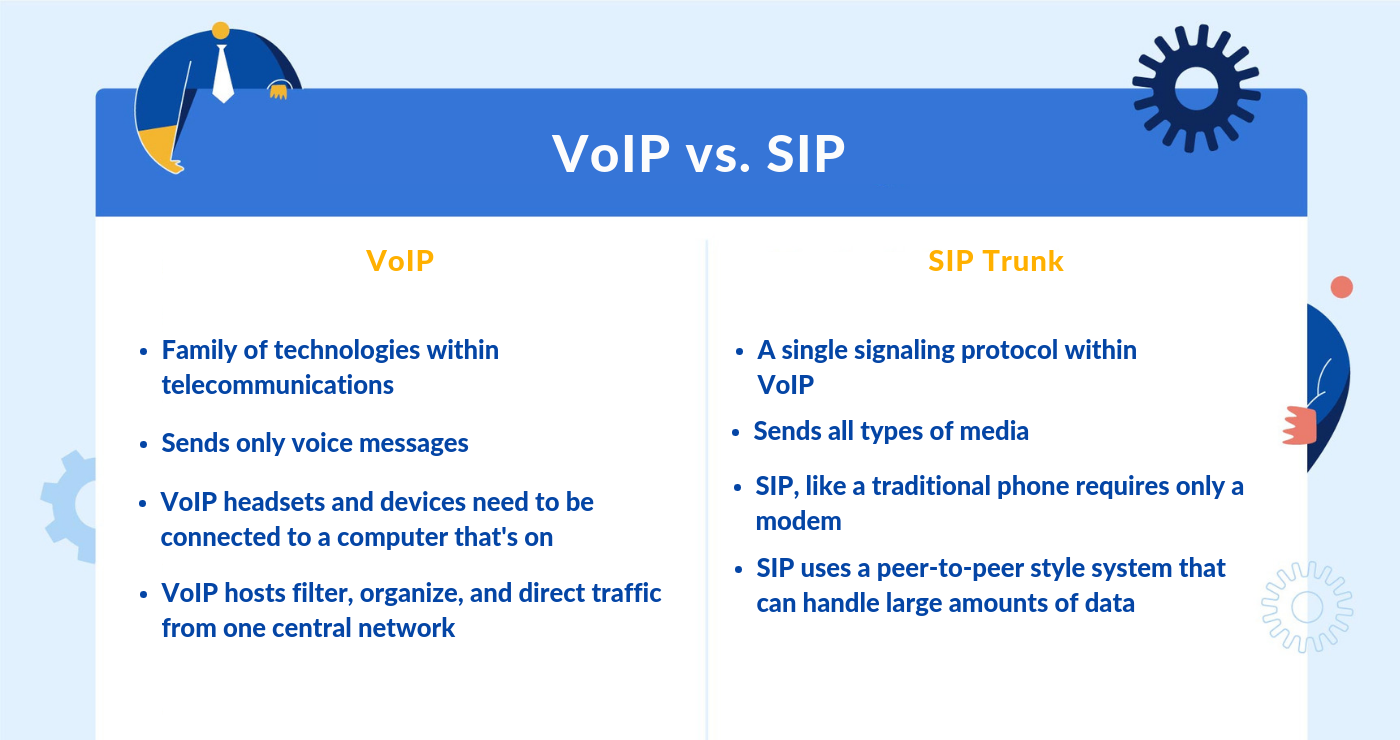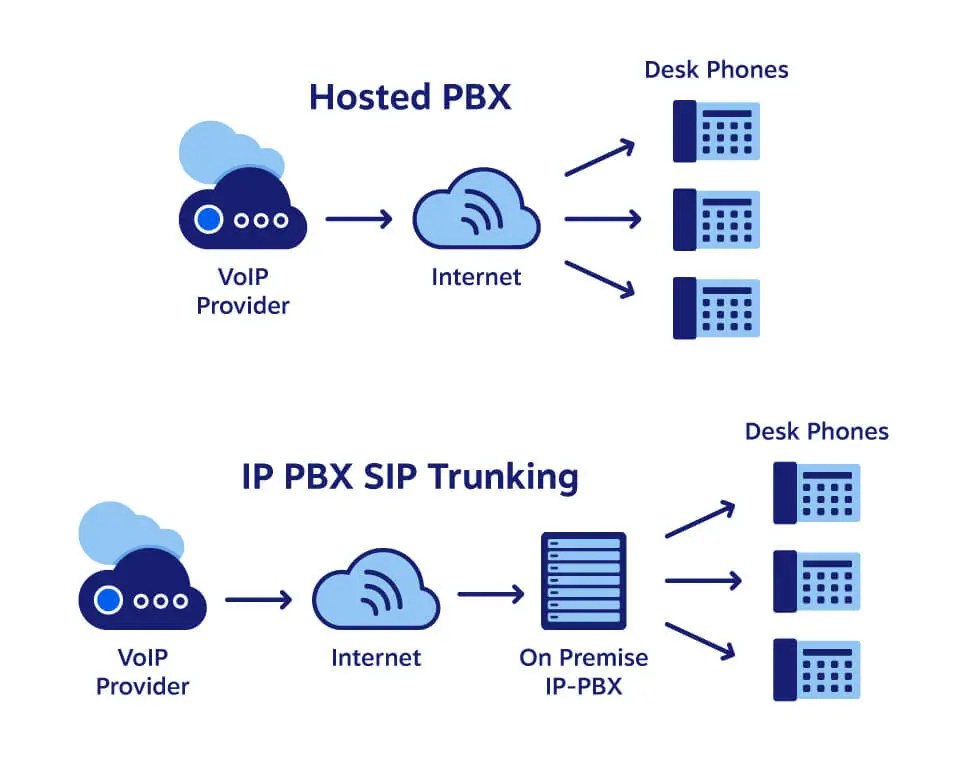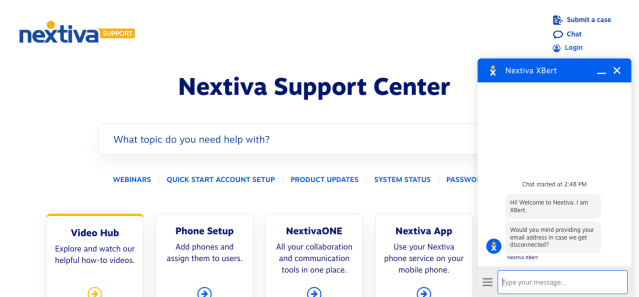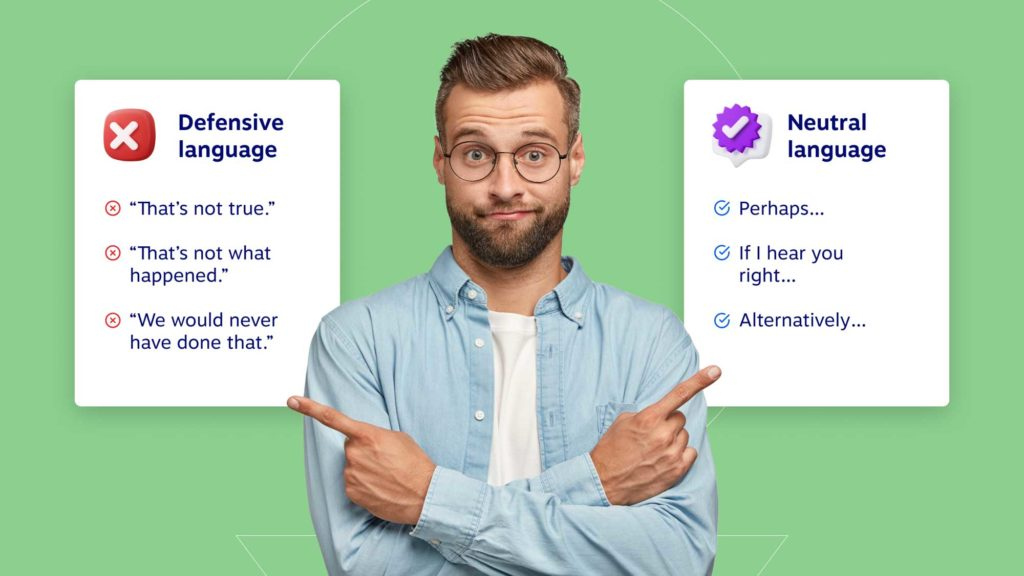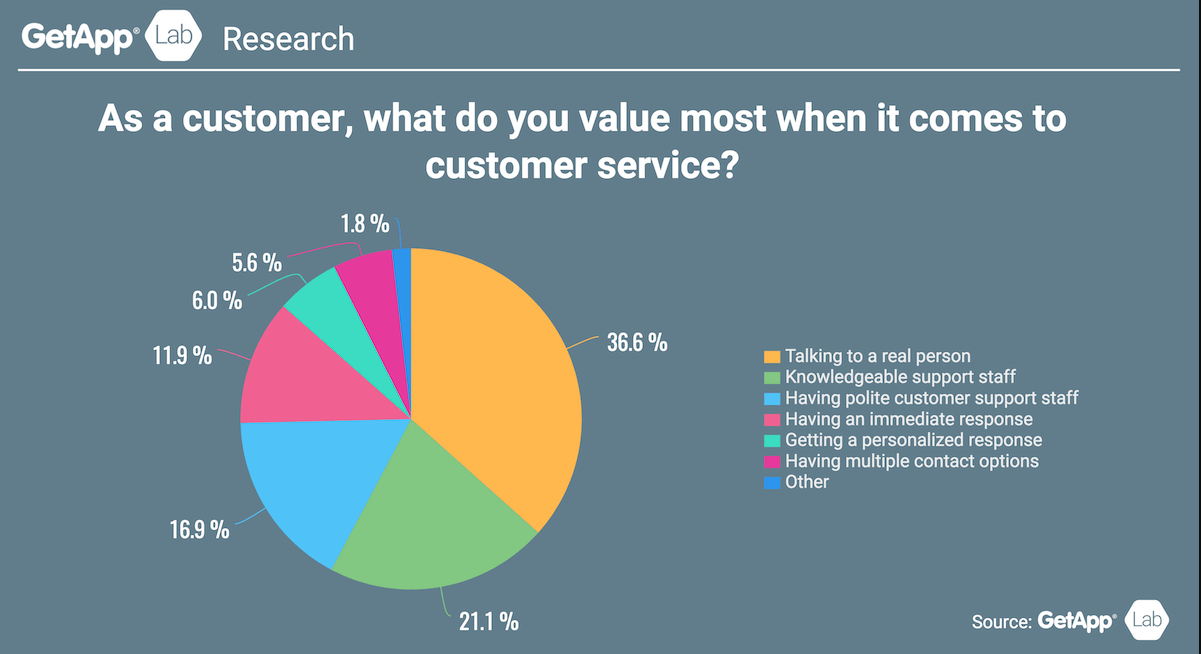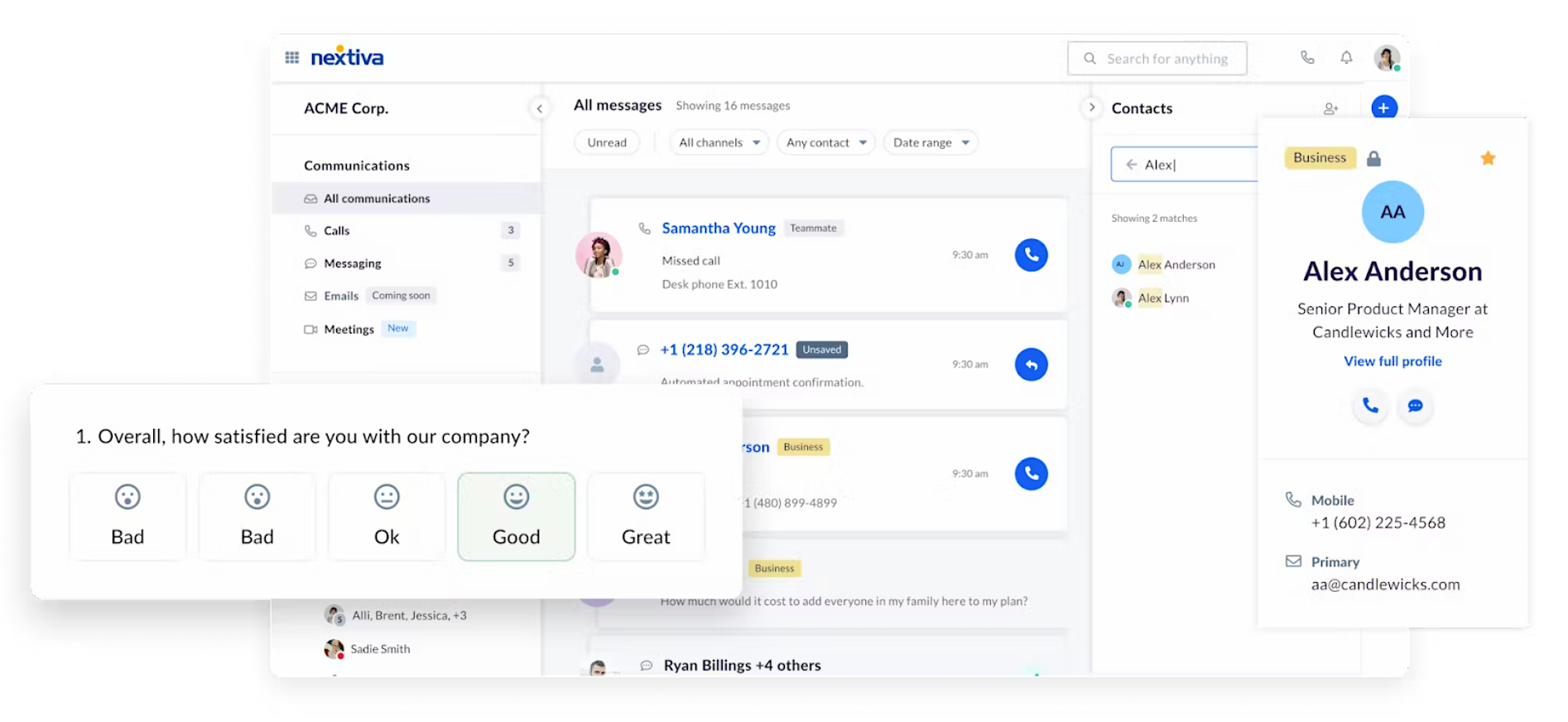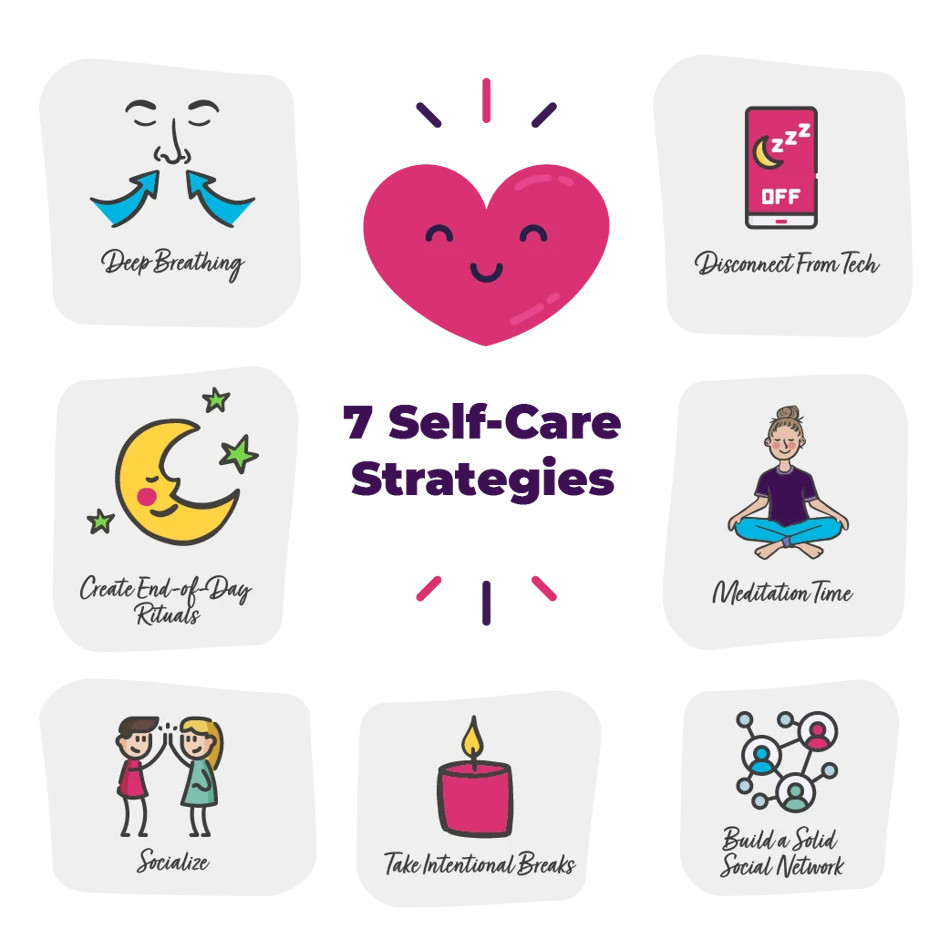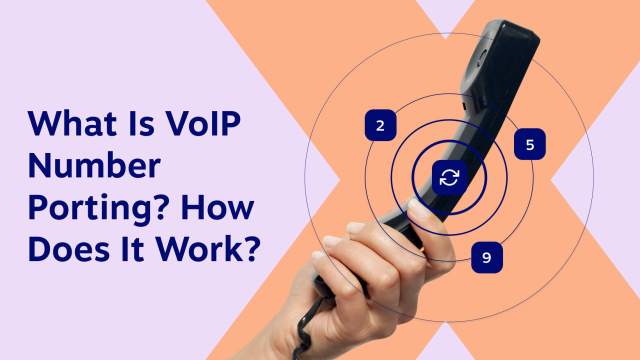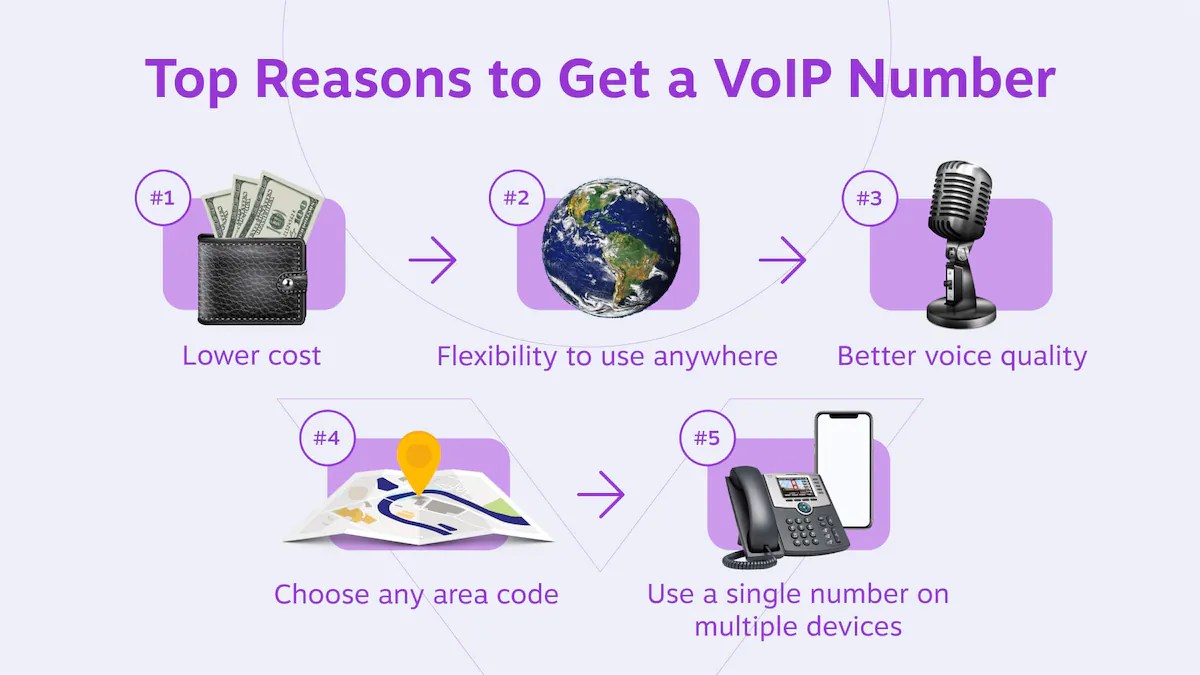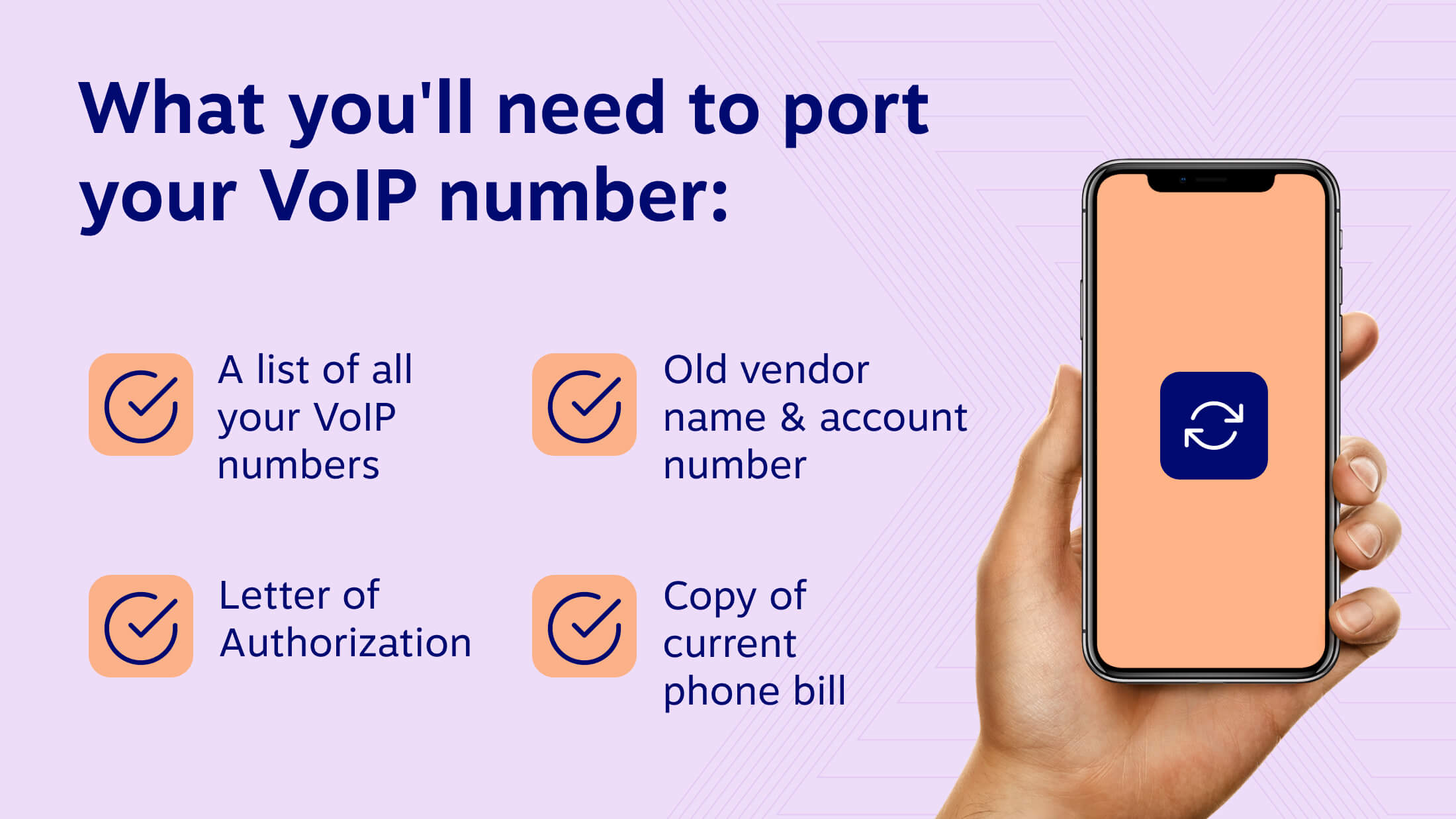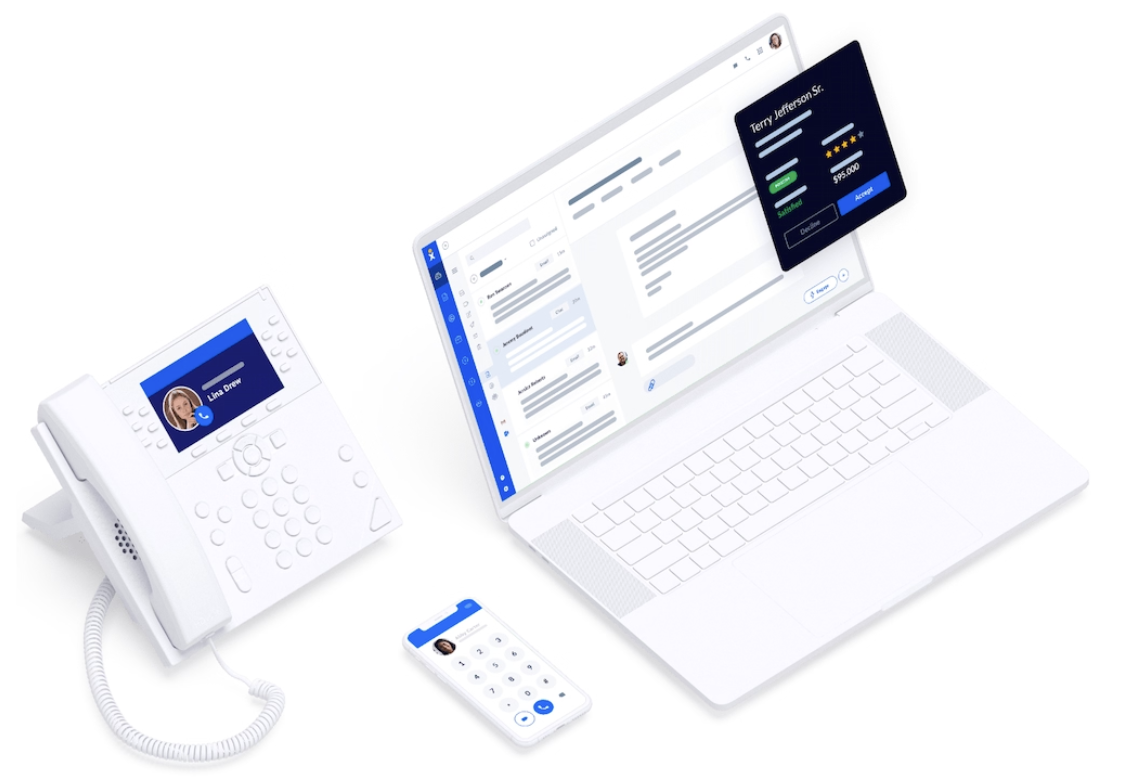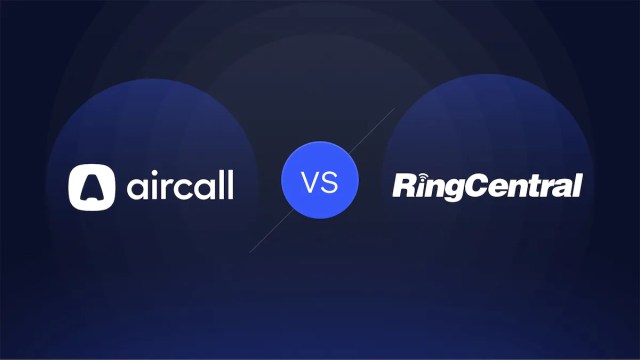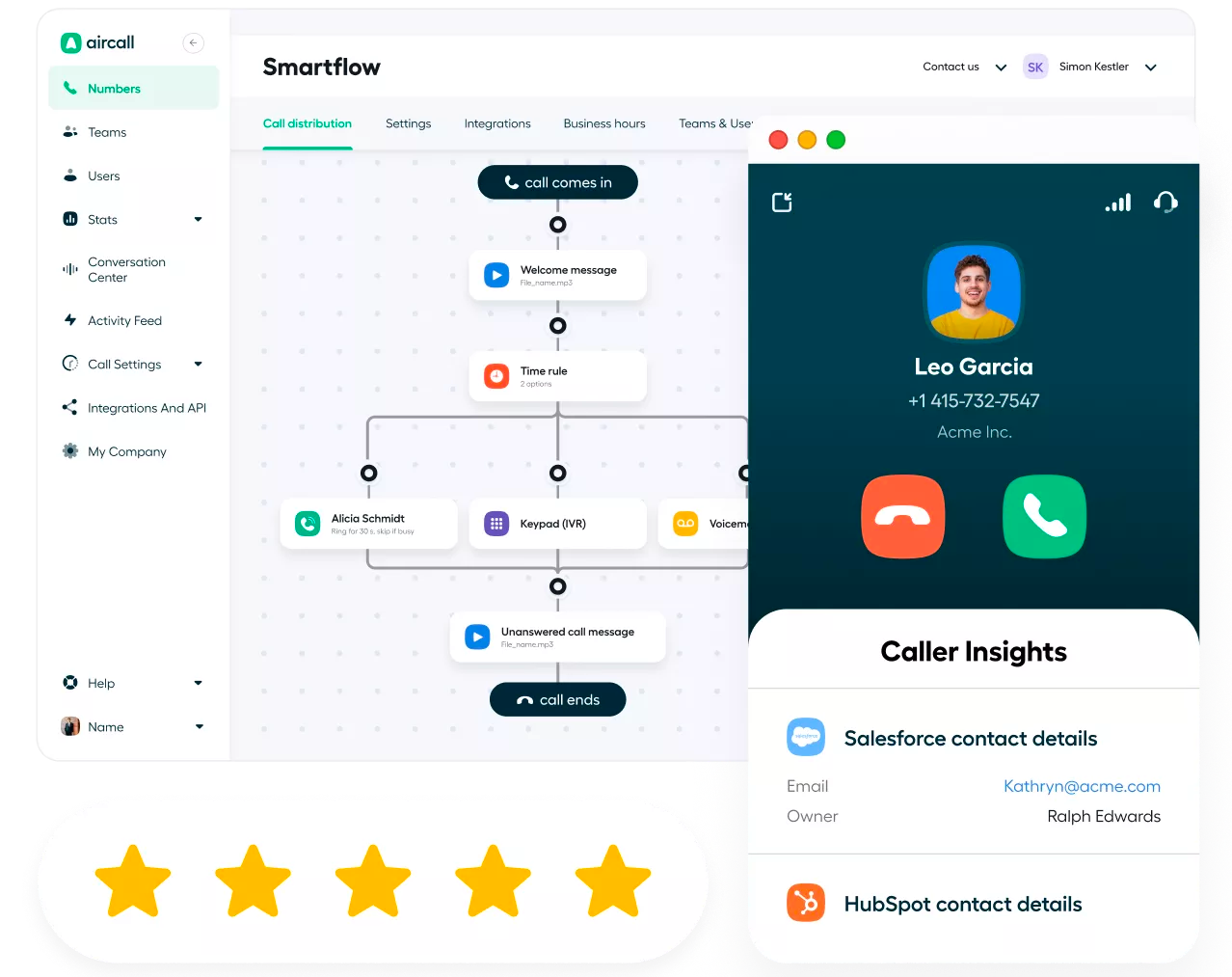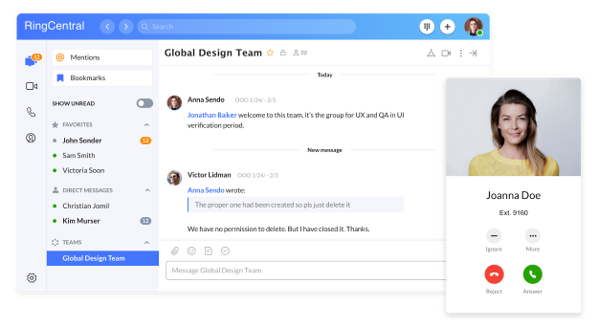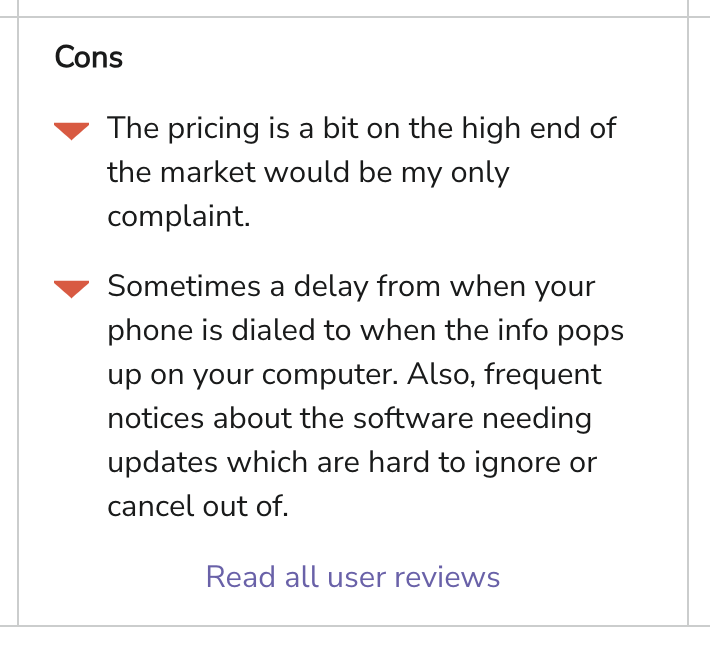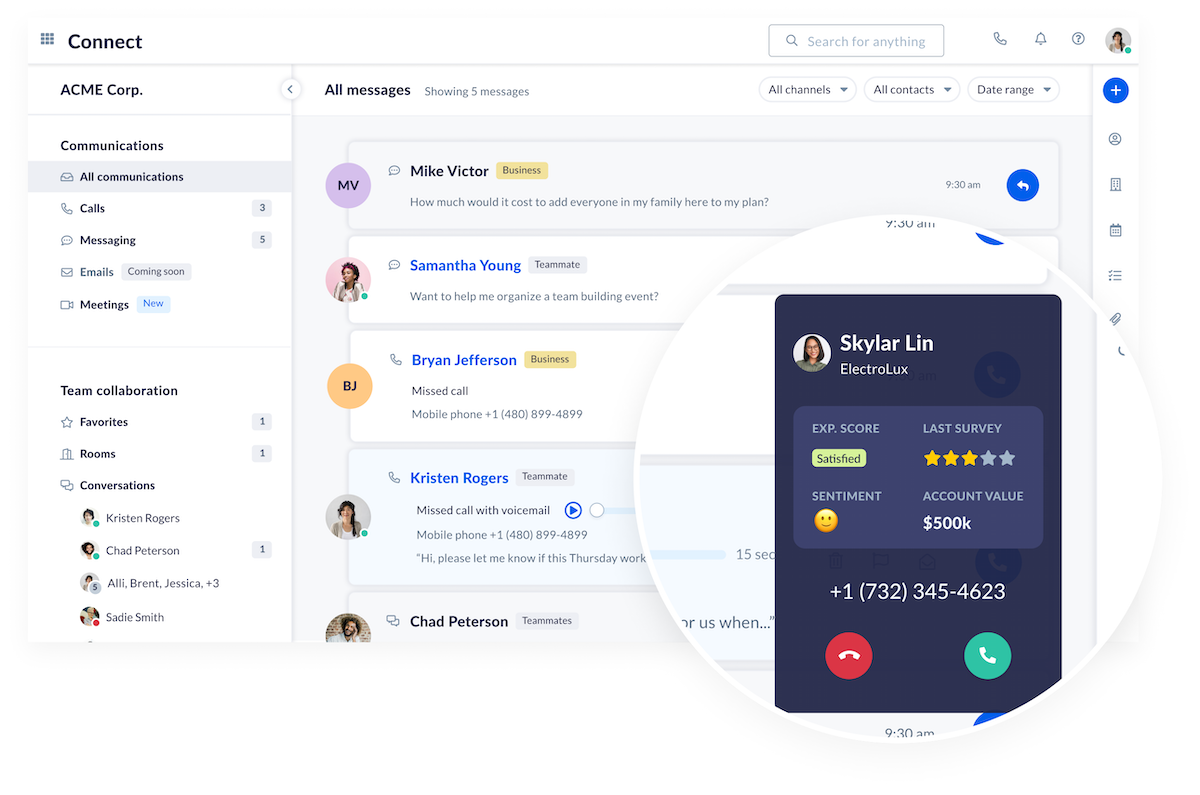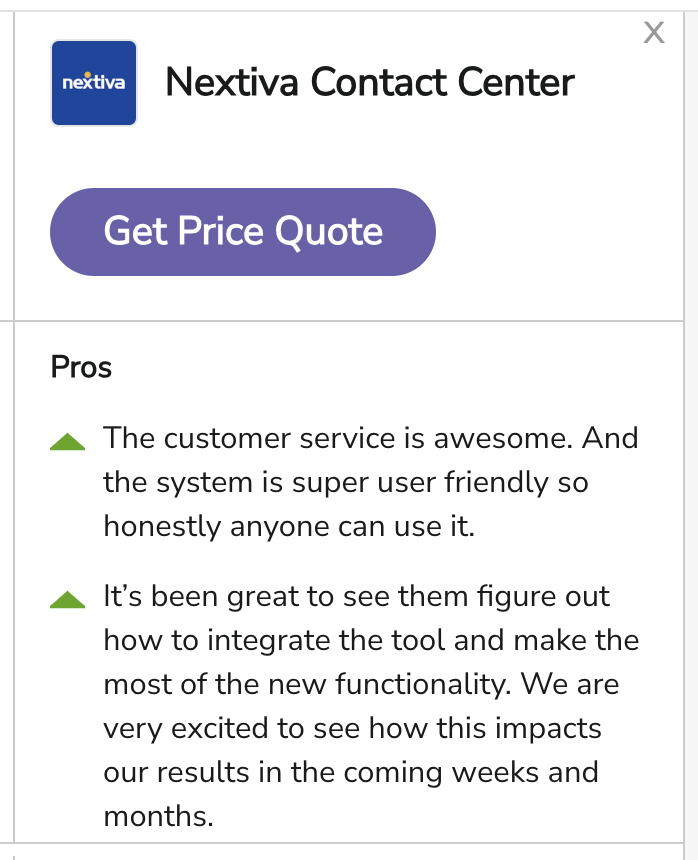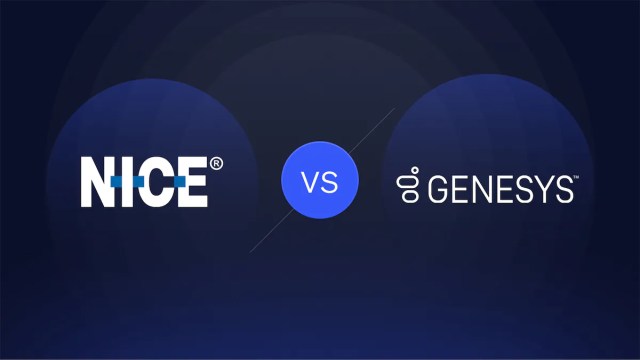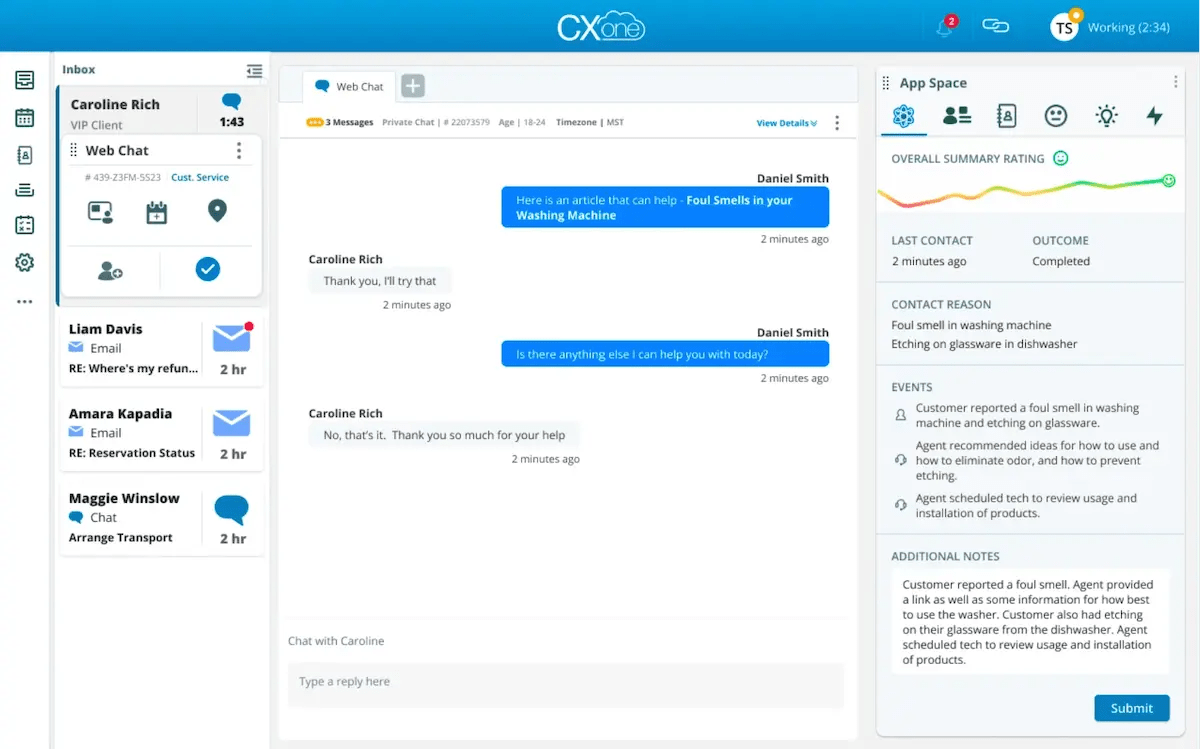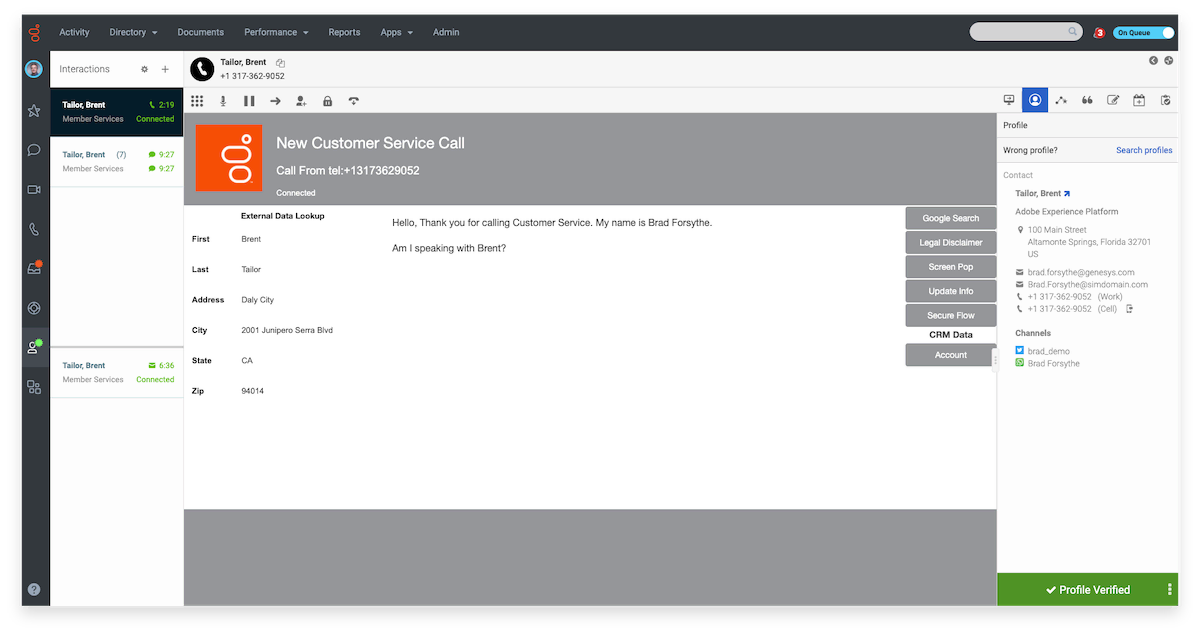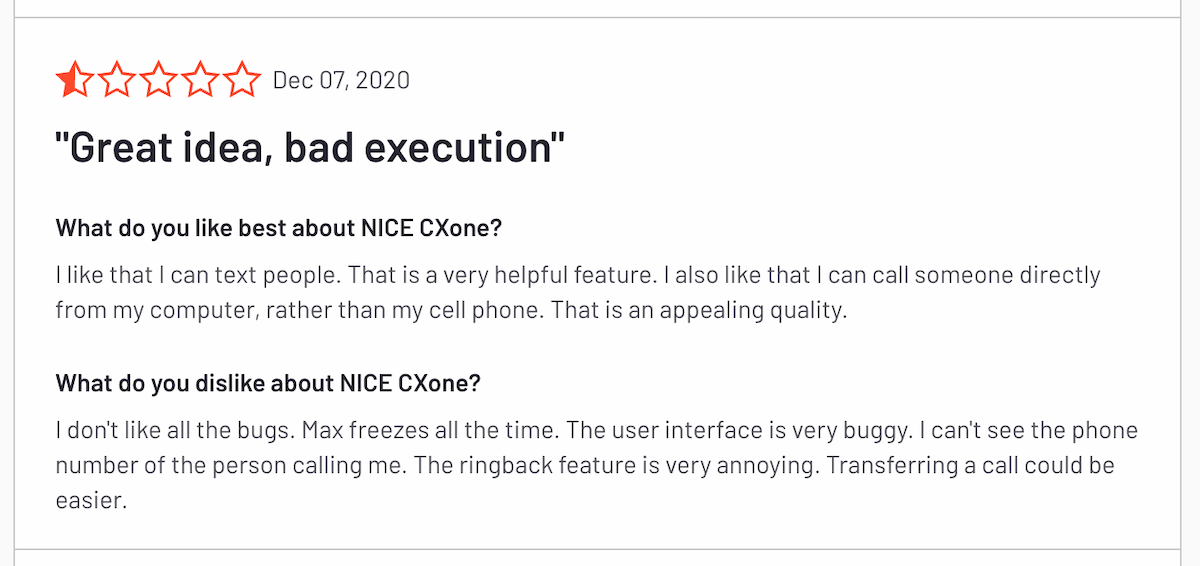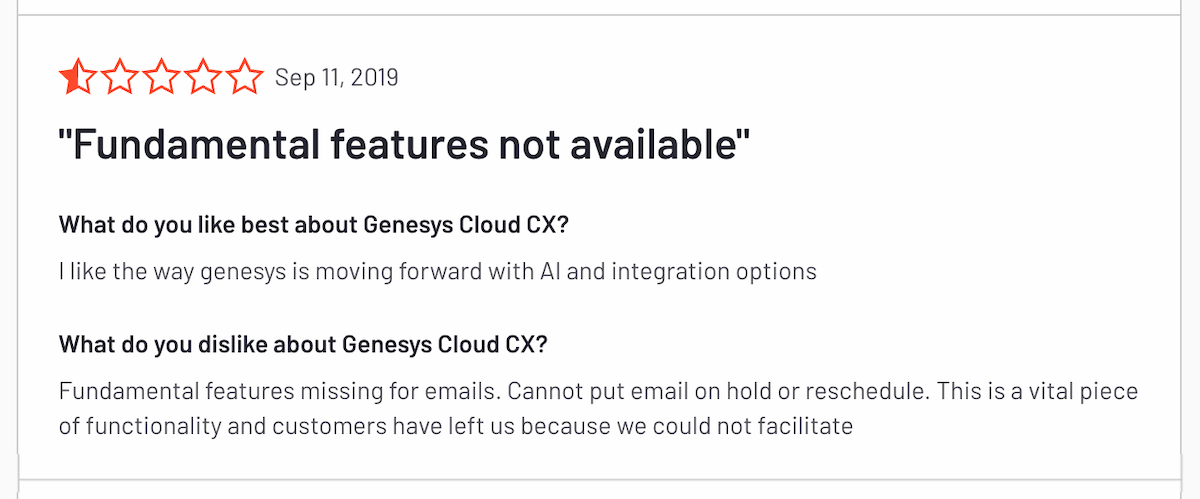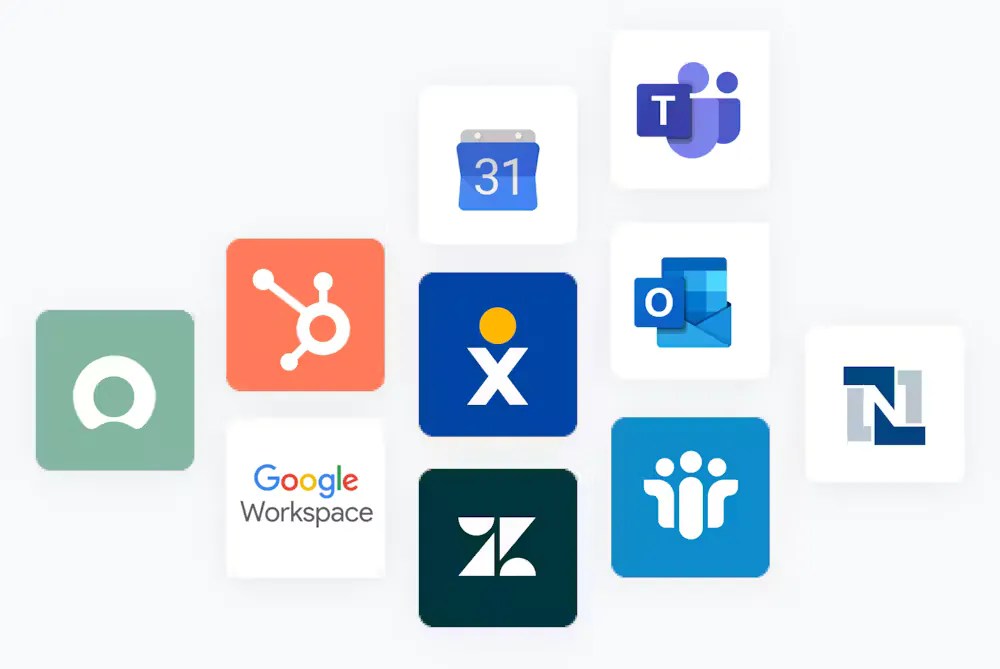Bandwidth and Twilio are two cloud communication platforms that provide features like text messaging and voice calling, with each offering SIP trunking and VoIP systems. They’re both reliable communications platforms, though each has its distinct pros and cons.
Here, we’ll break down Twilio vs. Bandwidth’s VoIP services with detailed comparisons to help you determine which may be better for you.
Bandwidth vs. Twilio: The Pros
Bandwidth and Twilio are both communication platform as a service (CPaaS) providers with comparable services and functions. Let’s take stock of each platform’s most significant strengths.
Pros of Bandwidth
These are Bandwidth’s advantages that small businesses, enterprise companies, and contact centers can benefit from:
- Global reach: Services cover a wide range of VoIP phone services globally, offering the potential for international scalability, with porting currently available in 65+ countries.
- Retail and wholesale services: Bandwidth’s VoIP services cater to enterprises with both wholesale and retail solutions.
- Comprehensive and versatile features: Functions include cloud-ready voice, messaging, and E911 APIs to maximize versatility, making it a strong choice for businesses or call centers that want a broad set of communication tools.
- User-friendly dashboard: Customers can take advantage of an intuitive interface for improved ease of use, even when managing, ordering, and configuring several phone numbers and line options.
- Strong customer support: Some reviews mention strong customer support overall, with clients confident that Bandwidth can resolve issues that may arise.
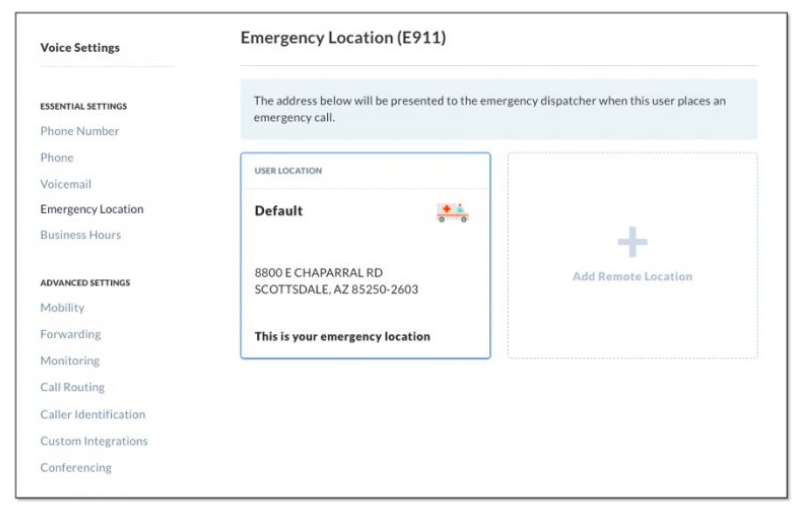
Pros of Twilio
Twilio’s most significant advantages include the following:
- Extensive documentation: All Twilio products come with extensive documentation that makes it easy for businesses to customize workflows, set up integrations, and use various product or service features effectively.
- Ease of use when setting up complex workflows: Twilio’s documentation and UI-based tools allow brands to set up complex workflows without needing to code extensively, making initial and ongoing setup easier.
- Support for diverse channels: Twilio’s Programmable Messaging API specifically supports a wide range of channels that include SMS, MMS, OTT, and email to provide global engagement with customers through redundant carrier connections and multiple phone number types.
- Comprehensive sets of applications: Tools like Flex, Segment, and Frontline are designed to enhance customer engagement across different channels and leverage data to improve personalized interactions.
- Diverse and expansive features: Standout features include Voice API for customized voice experiences with features like interactive voice response, speech recognition, and high-quality connections through the Twilio Super Network.
- Flexible and transparent pricing models: Twilio’s pricing is relatively simple, allowing businesses to choose whether they want to only pay for what they use or opt for committed-use pricing.
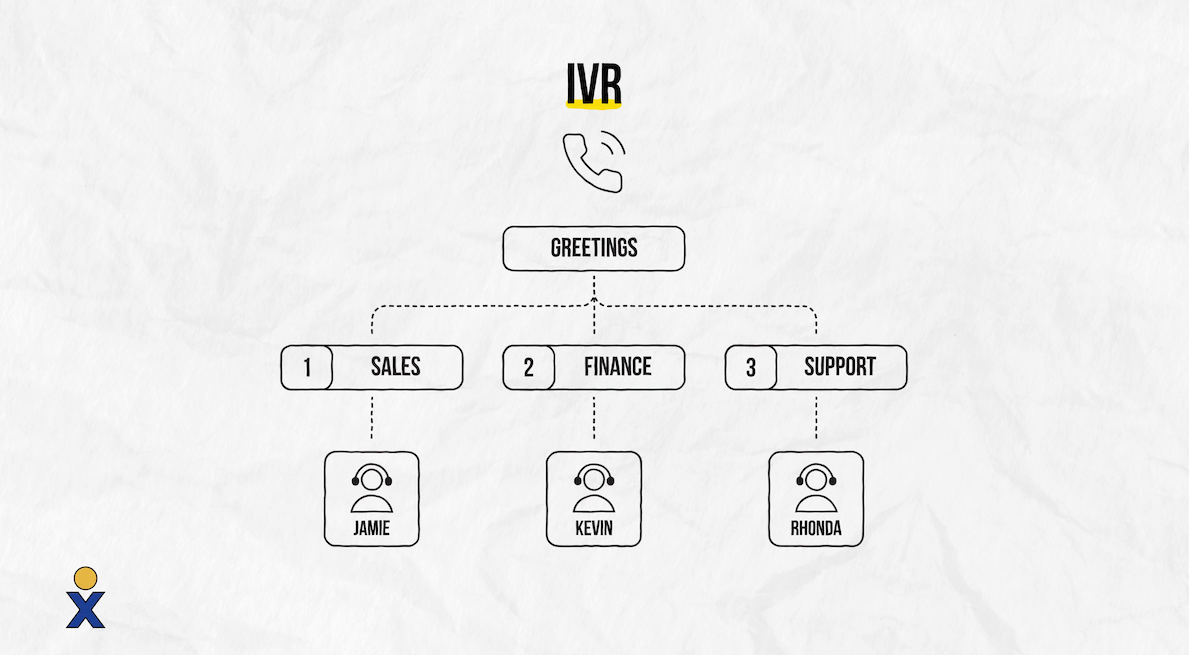
Bandwidth vs. Twilio: The Cons
Just as Bandwidth and Twilio each have distinct advantages, there are a few potential weaknesses to consider.
Cons of Bandwidth
These are the potential cons of Bandwidth:
- Some users find the process for porting telephone numbers cumbersome and time-consuming, as there’s no direct way to add or remove numbers without canceling and re-entering them.
- Adjusting settings on multiple DID numbers can be unintuitive and slow, impacting the efficiency of managing communications.
- Some customers felt that the setup wasn’t intuitive, and the need for developers to set up complex workflows or integrations was cumbersome.
- Some customers were unhappy with the contract pricing and felt like they were overpaying compared to the services used or that there was a lack of flexibility or transparent pricing.
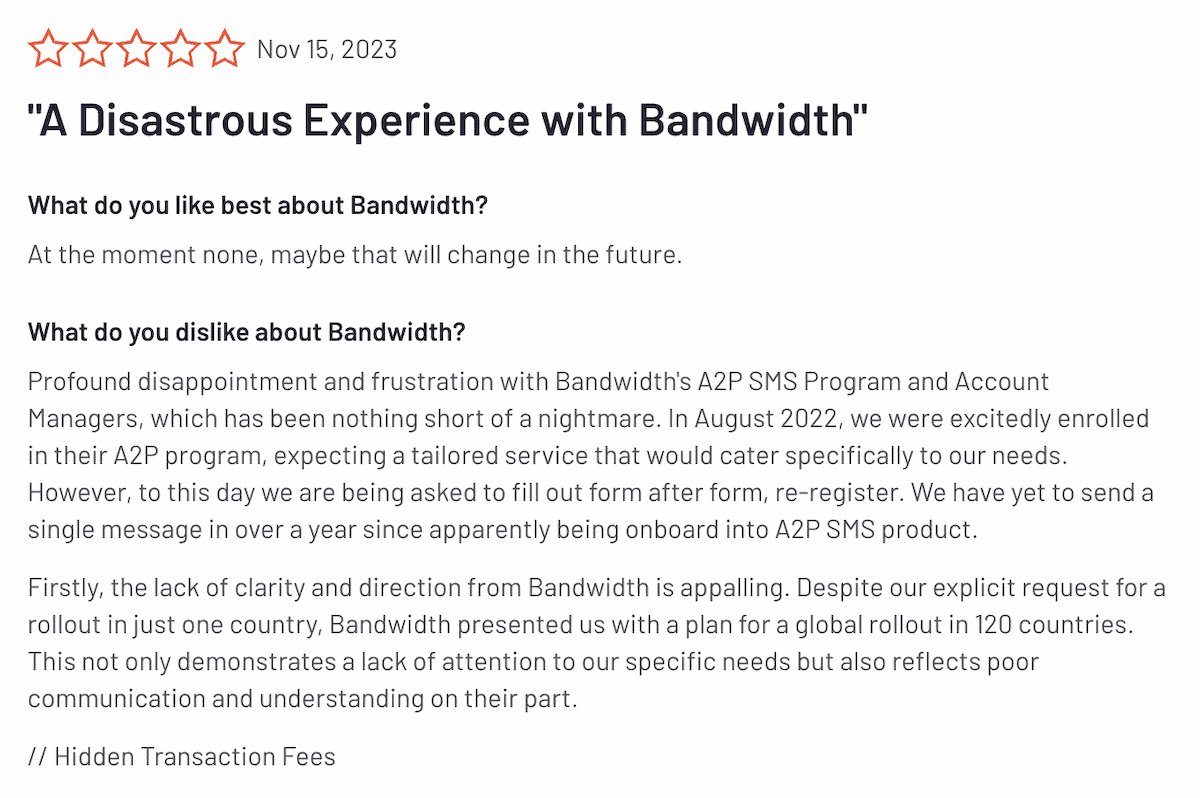
Cons of Twilio
These are the potential cons of Twilio:
- Specific functions within Twilio can be challenging to set up, even with the available thorough documentation.
- The setup for routing multiple channels to the same agents has been noted as particularly difficult for customers, which can directly impact businesses and call centers trying to streamline their communication channels.
- Some user reviews noted delayed customer support response times, with assistance for their plans only available through email.
- The software and the setup process have steep learning curves for many users, requiring developer work to set up API integrations and complex workflows.
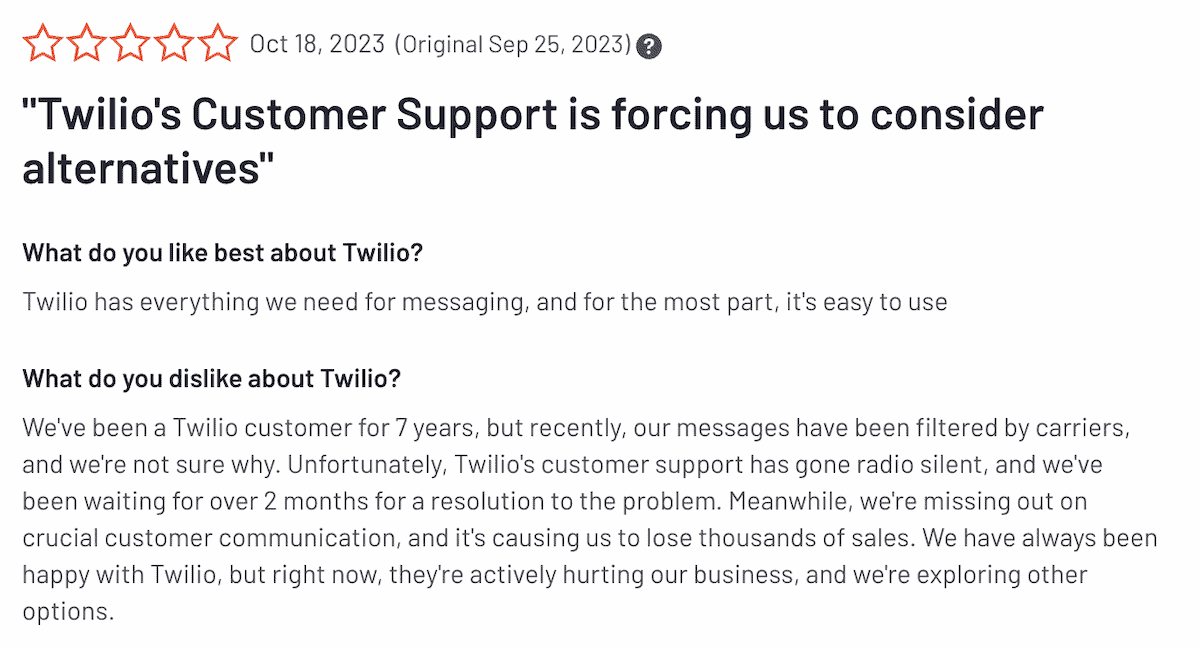
Comparing Bandwidth and Twilio vs. Nextiva
Twilio and Bandwidth are both good options for businesses looking for CPaaS providers, but it’s also important to compare them to additional services.
Nextiva offers many similar functionalities as Bandwidth and Twilio through individual products (like VoIP or SIP trunking services), in addition to a full unified communications as a service platform.
Let’s discuss how Nextiva’s VoIP solution compares to Bandwidth and Twilio.
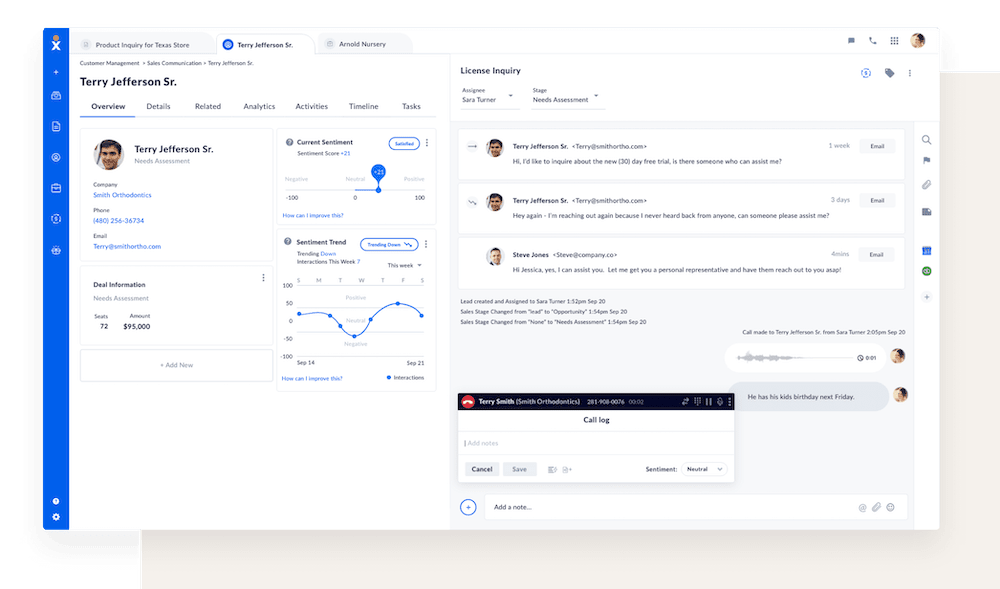
Cost efficiency
Nextiva offers significant savings on call expenses compared to both Bandwidth and Twilio, potentially reducing your overall phone bills by up to 60% for small businesses.
Nextiva’s pricing model is also transparent, allowing businesses to pay a flat fee per user per month, depending on their plan of choice. Plans start at $18.95 per user per month when paid annually. This includes unlimited voice and video calling.
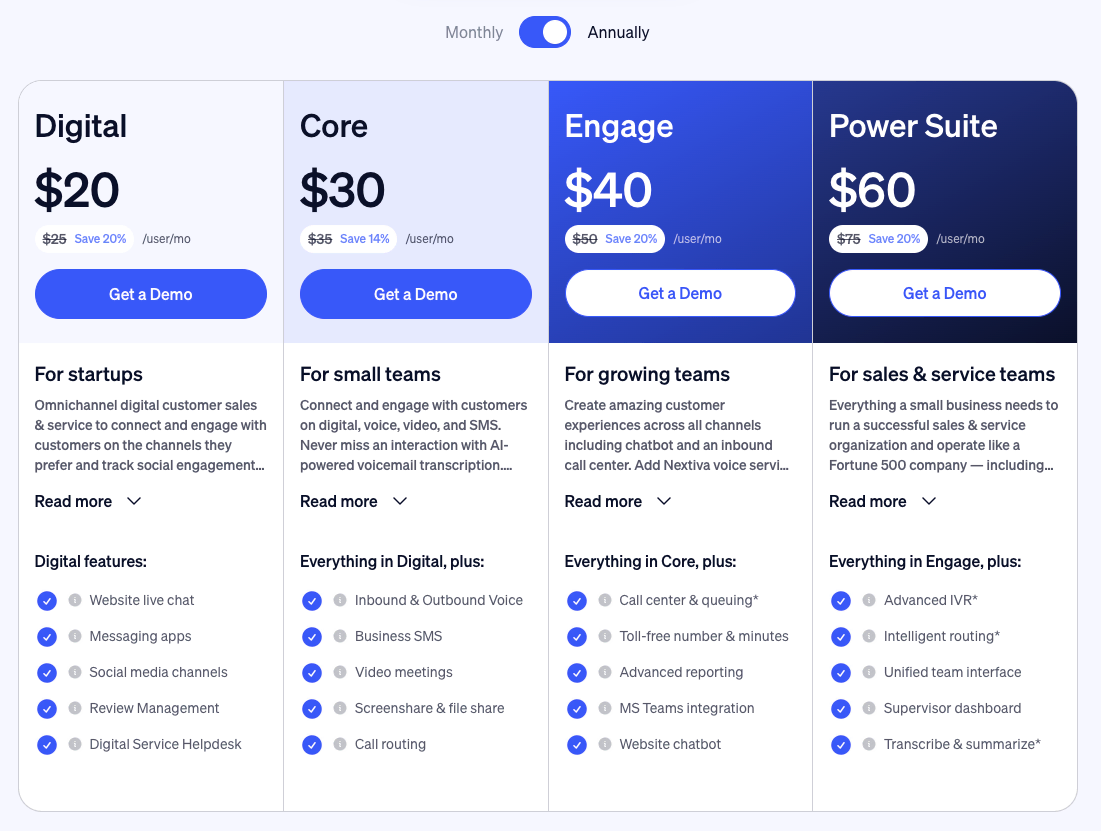
Twilio and Bandwidth both break down pricing by usage. For example:
- Twilio has prices starting at $0.0085 per minute to receive a call and $0.014 per minute to make a call.
- Bandwidth pricing starts at $0.010 per minute for domestic outbound calls and $0.0055 per minute for domestic inbound calls.
Enhanced accessibility
Nextiva users can make and receive calls from anywhere in the world as long as they have a data connection, offering complete portability and flexibility. This is increasingly essential for a mobile workforce, as workers can access their work phone line through the Nextiva mobile app or the Nextiva desktop app on an existing phone in or out of the office.
Advanced features and scalability
Nextiva offers advanced features that lend themselves to high scalability potential, which can be useful for both growing businesses and call centers.
Some of Nextiva’s most useful features include:
- Visual call flow designer and auto-attendants
- Advanced call routing and call transferring
- Call center analytics, including agent performance data
- Simple setup for small and large teams alike
- No requirement for additional hardware as the business scales
- Easy addition of new business lines
- Local phone numbers in any area code
- Complimentary toll-free phone number included with each account
- Video, voice, and SMS functionality
- VoIP and SIP trunking
- Integrations with tools like Outlook, Gmail, Salesforce, and more
Unique collaboration tools
We know that collaboration is a critical part of being able to reliably deliver strong customer experiences, so Nextiva offers collaboration tools designed to improve communication within teams that include the following:
- Threaded conversations across different communication channels
- Video meetings
- Integrated calendars
These features can enhance teamwork and productivity.

Comprehensive communication solutions
Nextiva’s communication solutions vary depending on the plan you choose, with available solutions potentially including the following:
- Unlimited calling within the U.S. and Canada
- Toll-free minutes
- Integrations with major CRM and customer-facing apps
High reliability and security
Some VoIP platforms don’t have the best reputations when it comes to reliability, with customers frequently citing deliverability issues, dropped calls, or poor call quality.
Both Twilio and Bandwidth had multiple customer reviews complaining about the reliability of the platforms, including message deliverability concerns.
As a result, choosing your provider carefully and considering performance consistency are essential.
Nextiva prides itself on offering both high reliability and security, knowing that these are essential for a customer’s communication channel.
Nextiva promises a 99.999% uptime with our secure network, which is protected by features like call encryption and third-party audits to ensure reliable and secure communications.
Strong customer support
Many customer reviews for Twilio and Bandwidth note negative customer service experiences, including delayed responses or limited options for customer support channels.
All of Nextiva’s plans include 24/7 customer support, with customer service channels for email, chat, and phone. We also offer multisite support and real-time system status alerts for all customers, regardless of plan.
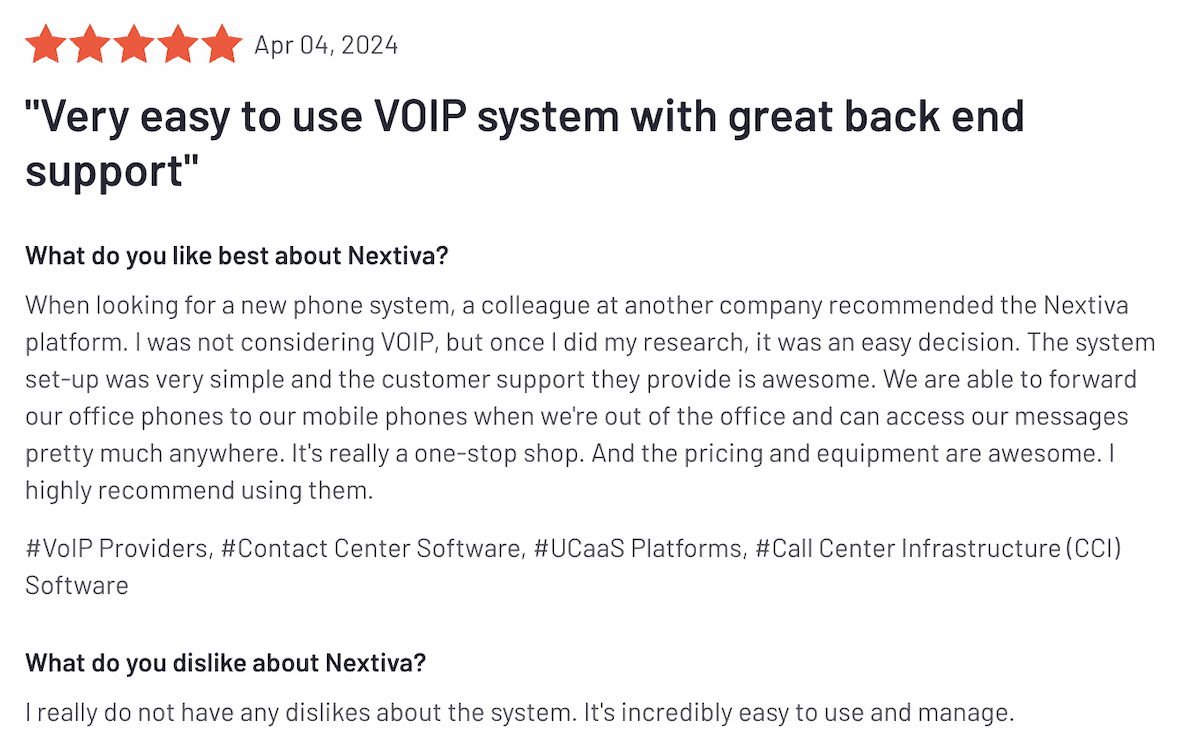
Get the Best Value in VoIP With Nextiva
While Bandwidth and Twilio both offer robust VoIP, SIP trunking, and communication solutions with distinct features, many businesses find that they get more by opting for Nextiva as their communications provider instead.
Where Nextiva lags in open APIs and developer communities, it excels in a flexible and ready-to-use communications platform. You won’t ever need developers or engineers just to get your team talking.
Nextiva’s VoIP service emphasizes cost savings, an extensive feature set, collaboration tools, and exceptional reliability, making it an appealing choice for businesses looking for a comprehensive communication tool.
All our products were designed with ongoing performance in mind, and that includes ease of use to ensure that you can set up and adopt our software as quickly and efficiently as possible — even if your team members aren’t necessarily tech-savvy.
Whether you’re looking for a virtual phone system for your small business or advanced contact center solutions, across diverse channels.

